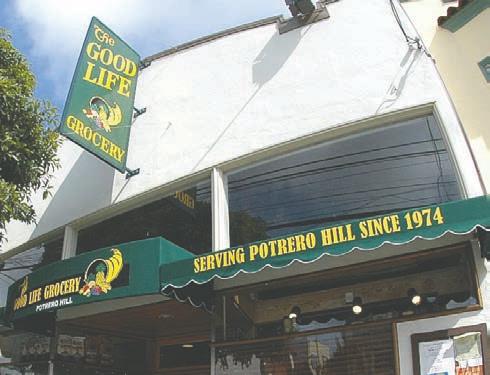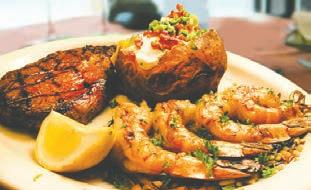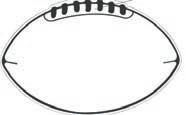
A Day in Dogpatch, Potrero Hill Pg. 7




Last fall, the World Wildlife Fund, a 50-year old global wildlife conservation organization, published the Living Planet Report 2016: Risk and Resilience in a New Era. The document utilized a Living Planet Index to measure the population status of vertebrates around the globe. The numbers are bleak. Between 1970 and 2012, vertebrate populations have diminished by 58 percent. Freshwater animals, such as amphibians, have taken the greatest hit, declining by 81 percent. Terrestrial and marine wildlife have dropped in abundance by 38 and 36 percent, respectively.
Johan Rockström, executive director, Stockholm Resilience Centre, one of the report’s contributors, cited the Anthropocene as a central theme in the publication. Though not officially a part of the Geological Time Scale, the Anthropocene is increasingly be -
WILDLIFE continues on page 4

As parking pressures continue to build in Dogpatch and Potrero Hill due to increased housing density, growing commuter traffic, and expanded activity at Zuckerberg San Francisco General Hospital and the University of California, San Francisco, the San Francisco Municipal Transit Agency has been working with neighborhood stakeholders to implement more stringent parking management regulations. Over the past several months meters have been installed on many blocks in Showplace Square. SFMTA is expected to continue to hold meetings with the Dogpatch Neighborhood Association and the Potrero Boosters, with the goal of creating parking management plans that’re supported by residents and businesses. The measures parallel SFMTA’s ongoing citywide evaluation of its 40-year old Residential Parking Permit program.
“We’ll be initiating more conversations with neighbors about how to manage the curb,” said Andy Thornley,
senior analyst, SFMTA. “Meters will be a small piece, along with other tools. It’s more than just RPP, time limits and meters; it’s also about traffic calming and making the curb safer for residents, businesses, pedestrians, cyclists and motorists.”
Since last summer, four hour time limited parking restrictions have been added to much of Showplace Square, along with meters on Kansas and Divisions streets and the block surrounding Showplace East. Additional meters are slated for 16th Street between Vermont and Seventh streets as well as Henry Adams Street, once 1 Henry Adams, a residential complex, is completed. Due to sidewalk improvements that’re underway, 16th Street will have four hour time limits in the interim, with meters likely installed next year.
“The price of the meters can still be modified,” Thornley explained. “We’ll be watching the occupancy rates and thinking about reducing the price if there’s too much available parking. If there’s not enough parking we’ll raise the rate. So far it seems that the rate
needs to go down, but a basic study will be done to evaluate.”
According to Thornley, local business owners and California College of the Arts representatives have noticed improved parking access for customers and the College’s community members since the restrictions have been incrementally implemented. However, with the Showplace Square limits added there’s been a significant reduction in unregulated parking in parts of Potrero Hill, especially in the neighborhood’s northern end on 17th, Carolina and Arkansas streets.
“Our area is a historically unregulated parking magnet for people coming up from the Peninsula with cars, who then park and bike or take transit to SoMa or elsewhere in the City,” said J.R. Eppler, Potrero Boosters president. “Now that we have more retail and more residential development the problem has only been exacerbated. At Showplace the meters and time limits are designed to meet the needs
In 2008, the City and County of San Francisco created the Life Sciences and Medical Special Use District, bordered by Mariposa Street south to 23rd Street and Interstate 280 east to Third Street, as part of the Eastern Neighborhoods Plan. The District “is intended to support uses that benefit from proximity to the University of California, San Francisco (UCSF) campus at Mission Bay. These utilizations include medical office and life science (biotechnology) uses.”
The District serves as a zoning overlay under Planning Code Section 249.36. A small southeastern portion of the area is designated an Innovative Industrial Special Use District, geared towards affordable office space for entities engaged in creative incubators and micro-enterprises.
“It is worth noting that UCSF is a state agency and is therefore not subject to local regulations and laws, such as zoning code,” explained Candace SooHoo, deputy communications manager, San Francisco Planning Department. “The presence or absence of such an SUD does not have any legal bearing on where the University could locate life science and medical land uses in Dogpatch, or any other San Francisco neighborhood.”
UCSF’s land use activities are subject to the UC Board of Regents, a governing body composed of 26 voting members, rather than municipal ordinances. However, UCSF consults with community members and the Planning Department about proposed developments. In 1992 the University launched a Community Advisory Board to monitor neighborhood expansionrelated concerns.
Within the District UCSF has two projects in design and environmental review phases. UCSF acquired 560, 590 and 600 Minnesota Street to create affordable housing for about 810 University graduate students and trainees, along with their partners. If approved by UCSF’s Physical Planning unit construction will begin sometime
I’m a loser. Over the years, I’ve repeatedly lost my wallet, keys, and precious childhood mementos. When I was a teenager, I lost jobs. As I young adult, I lost self-respect due to a lack of dating integrity. I lost an election. I lost my innocence, painfully scrapped away, year by year, by life’s grater. I’ve lost friends and relatives, from death and poor relationship management. With my wife, I’ve lost pregnancies.
I’ve had more than my share of blessings; the scale no doubt tips in my favor. But the losses, even seemingly small ones, like leaving behind my childhood stuffed animal in a move, my Rosebud, still sting, in deep and painful ways. I’m not alone in feeling this way. Evidence suggests that people prefer avoiding losses to acquiring equivalent gains: it’s better to not lose $50 than to win the same amount. Some studies indicate that losses are twice as powerful, emotionally, as gains.
Part of the problem is the American approach to losses, summed up by “no pain, no gain,” which leaves many of us feeling even more like a loser when we’re wounded. In our national myth losses make us stronger, they’re the essential ingredient to becoming a winner. The archetypal story is one in which the hero losses everything – family, fortune, even health – and bounces back to become better in every way; spiritually, physically, emotionally, even an improved lover.
This is not my experience. My wife’s stillbirth did not make me better.
It’s true that hitting rock bottom is transformative, one way or another. But we shouldn’t confuse the instinct to overcome challenges with the healing of a heart. My father-in-law, orphaned during the Holocaust, responded with a relentlessly optimistic work ethic that created a thriving law practice and raised six children. But he still cries for his lost parents, missing childhood, his emotional makeup hard-sculpted by his unspeakable loss.
Failure caused by our own actions
is different from shit just happening. We can learn from our mistakes, and be better off by doing so. But that’s a distinct channel from an uncontrollable flash flood of hurt. Likewise, stories of recovery can mislabel personal redemption as a heroic journey to success. The former millionaire who lost everything because he cheated on his wife and company, then gained his soul, may feel better, but wouldn’t it have been preferable if he hadn’t acting so badly in the first place? Should we credit stopping being an asshole with laudable success?
It’s impossible to avoid loss; we are defeated again and again, if only by our own bodies. That’s life; it should, in thoughtful, intentional, ways, be celebrated. It’s not helpful, though, to insistently designate damage done as an essential building block for achievement. That path leads to a terrible emotional cul-de-sac for those, many of us, who don’t achieve new heights after a financial, physical, or emotional beating. It arguably contributes to the rise in suicide rates among middleaged men, trapped in self-loathing. I’m a loser because of my loss, and even more of a loser because my loss brought me nothing but pain.
Loss is long and quiet. Success is short and loud, sometimes so loud that it disrespects loss. We shouldn’t wallow in self-pity, nor refrain from finding ways to transform hurt into something more useful. But, at one point or another, and certainly at the end, we’re all losers. It’s something we have in common, even more than our successes. Let’s honor that.
The 10th Street building that theater company, Thrillpeddlers, has occupied since 2004 has been sold, forcing the troupe to vacate the premises by the end of this month. For the past 17 years Thrillpeddlers has performed an annual “Shocktoberfest,” and has had significant success with revivals of many 1970s Cockettes musicals, working with composer and original Cockette Scrumbly Koldewyn . As a result of the move, the company’s most recent offering, Amazon Apocalypse, a new musical with book and lyrics by Koldewyn and Cab Covay, music by Scrumbly Koldewyn, will be presented as a semi-staged concert for three nights, February 9, 10, 11, at 8 p.m. Tickets can be purchased at http:// www.hypnodrome.org
For more than two years, 584 Vermont Street has been the scene of trash, loud arguments, screeching tires and the constant comings and goings of myriad individuals. Last year, arrests were made at the house, whose occupants were reputedly linked to a car theft ring. An elderly bed-ridden woman was discovered by the San Francisco Police Department , and removed by Adult Protective Services Recently, the house has fallen into further disrepair, with broken and boarded-up windows. An illegal, overflowing, dumpster occupying a parking space in front of the property has attracted homeless rummagers. Nearby residents have unsuccessfully tried to find a municipal agency to address the situation. Complaints lodged to 311 have gone unheeded, the Department of Public Works, whose trucks run ahead of street sweepers, have done nothing, the Department of Public Health hasn’t been responsive. District 10 Supervisor Malia Cohen’s legislative assistant, Stephen Witt, said he’s contacted the Bayview Police Station, and thought perhaps the Fire Marshall should be involved. Help!


Latin American tapas and cocktail bar Poquito severed its last customer shortly before Christmas last year. Located at 2368 Third Street, Poquito opened in 2010, with a focus on small plates, such as arepas, empanadas and ceviche, with an Ecuadorian twist, as well as specialty cocktails and sangria. In a 2012 Examiner interview, coowner Richard Vila explained why he set up shop in Dogpatch, which has less foot traffic than other San Francisco neighborhoods, “We definitely would have had a much different experience if we had opened somewhere in the Mission or in North Beach, somewhere that’s always bustling, but where you wouldn’t be able to build that rapport with your neighbors, which is nice.”
Over the past two years, Kaiser Permanente San Francisco has donated $25,000 annually to the Potrero Hill Neighborhood House , and plans to make an equal donation this year and next, totaling $100,000. The funds have been dedicated to making capital improvements, including renovating the gymnasium, repairing elevators and creating storage areas to support the NABE’s community programs… Former Alabama Street resident, Kieron Sinnette, has launched ProLocal Boston, modeled after a similar entity that catered to small businesses in San Francisco. As reported in the November 2015 View (“Twists and Turns Lead Former Hill Resident to the U.S. Navy”), Sinnette signed up for the U.S. Military, and was sent to boot camp, where he was awarded a Bravo Zulu – “Well Done” – but was separated from service as a result of having Keratoconus, a progressive eye disease in which the normally round cornea thins and begins to bulge into a cone-like shape. He’s paying his bills by working as a logistics manager at Amazon.
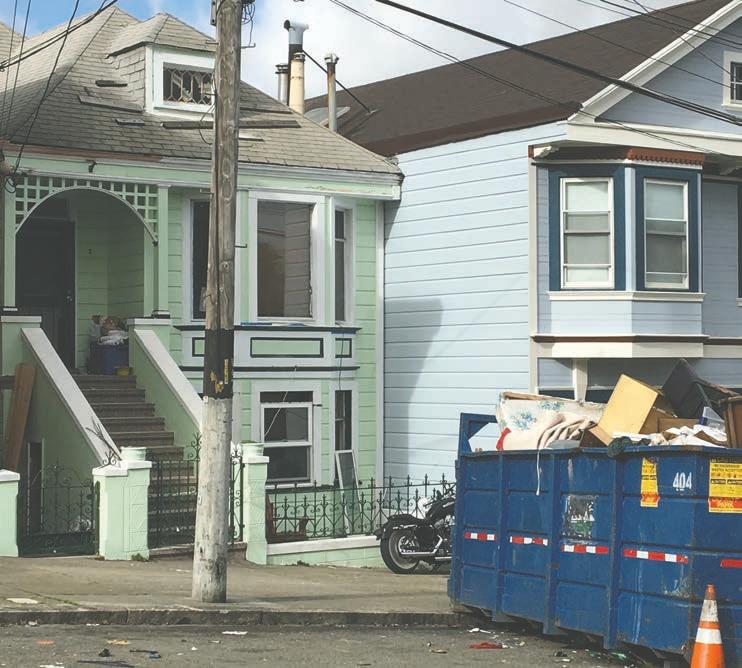

Editor,
As a member of the Driscoll’s family and the Bay Area farming community for more than three decades, it’s my responsibility to share facts about farmworker treatment in response to your story, “Driscoll’s Boycott Hampered by Poor Information” (December, 2016).
A core aspect of Driscoll’s vision, one that I deeply believe in, is to enrich the lives of everyone we touch. With more than 100 years of farming history, we know first-hand how valuable farmworkers are; to us, their families and their local communities.
Our independent grower, Sakuma Brothers, and Familias Unidas por la Justicia reached an agreement last year in the state of Washington after direct negotiations that effectively ended protests and boycotts. Further, in 2015 Baja farmworker leaders, the Mexican federal government and growers representing the fruit and vegetable industry reached an industry-wide agreement, which ended a strike across all crops, not just berries, or only those berries sold under the Driscoll’s brand.
What’s more, our independent grower in Baja California, BerryMex, consistently serves as a progressive leader within the agriculture community, and has been committed to transparency with regard to wages and earning potential for its workers, as well as to building infrastructure for their communities (i.e. water; sewer
systems). We believe that if other growers in Baja modeled themselves after BerryMex, most of the issues that have plagued communities across Baja could have been avoided.
In 2016, Driscoll’s launched the Fair Trade certified Organic Program, a pilot initiative with Fair Trade USA. The comprehensive set of global guidelines and Worker Welfare Standards that we’ve introduced speak to our commitment to the fair, legal and ethical treatment of individual workers, and a dedication to make a positive impact within the communities where we operate.
Michael Hollister Senior Vice President Sales andMarketing Driscoll’s San Francisco
Editor,
Since Lyft moved to Potrero Hill there have been three serious car accidents. Hill residents are dealing with an out of control traffic situation, as the company has hundreds of drivers coming and going all day long. Since Lyft is constantly hiring new drivers, the accident situation is surely only going to increase. An enterprise this large needs its own parking lot, as opposed to using a public street as its company’s space.
John Pamelli Kansas Street
“My 1 year anniversary and I'm still LOVING my new home. anks Liz."
-Dawn R.
Editor,
Now that the drought is over in San Francisco is the City ever going to repair the fountain at the Utah Street entrance of Potrero Del Sol Park? How come fountains in the rest of the City are serviced, but ours is not?
Terra Chavez 25th StreetPlease announce the relocation of our beloved Center Hardware store. Like so many other San Francisco service industries, it was pushed out of its last location due to “development.” Fortunately, Center hasn’t moved too far, still in District 10.
Juan T. Rehbock Connecticut StreetThe City and County of San Francisco intends to grant Forest City Enterprises rights to build a wall of nine-story buildings along the Central Waterfront, from 20th to 22nd streets, which would completely obscure scenic Bay vistas for many, if not most, Potrero Hill eastern slope residents. As one travels down 20th Street from Missouri Street to Third, beautiful Bay views would disappear. Imagine that the American Industrial Center, the red building with white columns at the corner of 22nd and Third streets, was doubled in height. The replacement of four- and six-story structures with nine-story edifices would dramatically Manhattanize this historical waterfront.
City renderings have consistently shown six-story buildings, with no assessment of the impact of nine-story structures. The actual City plan is outlined in the Draft Environmental Impact Report, on Figure 2.5 and Table 2.2, issued in December; http://sfmea.sfplanning.org/Pier70DEIRFull.pdf. H ill residents can comment during a public hearing on the Report on February 9, or mail remarks to the San Francisco Planning Department by February 21.
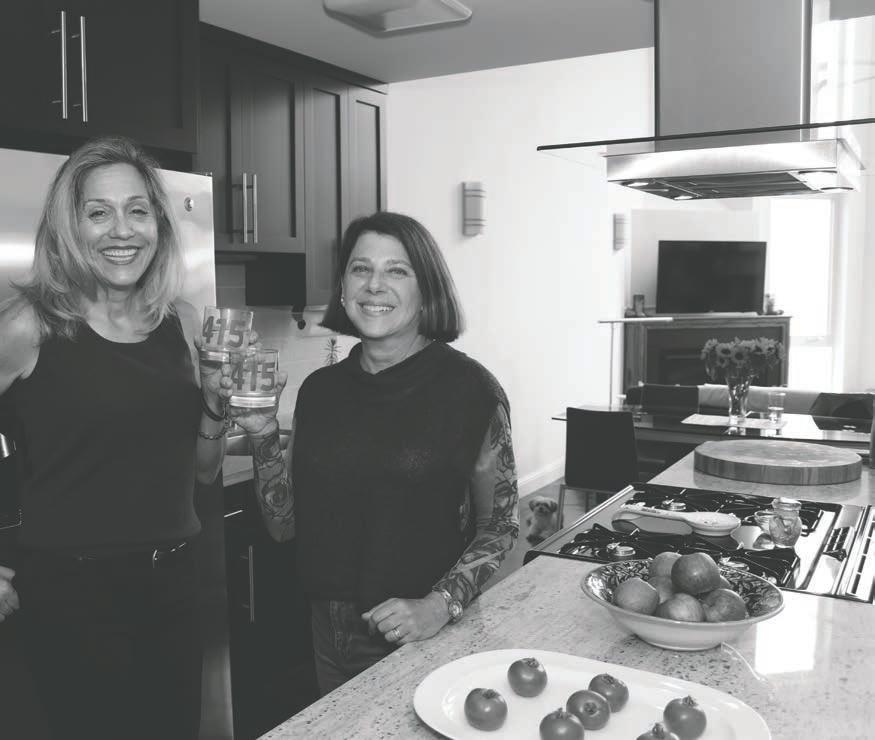
Liz has been your neighbor since 1995. Whether you are buying or selling, anywhere in the city, or just considering the value of your home, ask Liz. She looks forward to serving your needs for years to come.
Drop Liz a line any time to sign up for her free biweekly e-newsletter, full of market updates and other useful info!
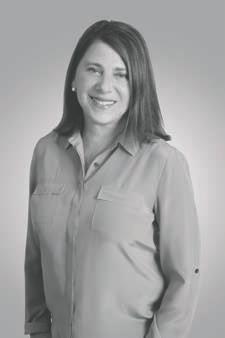 Liz Hirsch
Liz Hirsch
CalBRE#01875475
415.505.7252
LizHirsch@zephyrsf.com
Follow me on Facebook, Yelp, Twitter and
San Franciscans may not realize that Proposition F, which focused on Pier 70 development and was passed by voters in 2014, employed pork barrel politics to authorize nine-story buildings across this entire stretch of waterfront by tying $100 million in redevelopment and affordable housing to removal of height restrictions.
Additionally, California Senate Bill 743 eliminated scenic protections from transit infill projects, which the City quickly applied. The November 26, 2013 Planning Department Summary, Attachment A, shows that the Planning Department has removed consideration of scenic vistas from most of San Francisco’s waterfront; http://sfmea.sfplanning.org/CEQA%20Update-SB%20 743%20Summary.pdf.
Don Clark lives on Missouri Street.
It used to be that when you’d go to the grocery store to purchase a dozen eggs all you’d have to worry about is whether or not any were cracked. Today, things are more complicated; many different labels may appear on an egg carton, referring to the hens’ living conditions and how they’re fed. Some labels are confusing; others marketing gimmicks. Here’s a rundown of the most popular labels.
Antibiotic-free, Medicationfree: Unregulated term; can mean anything.
Cage-free: The hens “reside” in large barns or warehouses. They’re required to have outdoor access, but the amount, duration, and quality is undefined.
Certified Organic: “USDA certified organic” reflects an improvement over standard living conditions for hens. They’re fed an organic, all-vegetarian diet free of antibiotics and pesticides, housed cage-free in large barns, and may, or may not, see the outdoors. They may be de-beaked – to prevent pecking their peers – and starved; to induce molting, which leads to more egg production.
Farm Fresh: Meaningless.
Fertile: The hens are living with roosters, which means they were likely cage-free.
Free-range or Free-roaming: This is an unregulated term, but implies that the hens aren’t in cages, reside in a barn and have outdoor ac -
cess, the extent to which isn’t defined.
Hormone-free: Marketing gimmick. Hens never get treated with hormones.
Natural, All Natural: A meaningless marketing term.
Omega-3 enriched: The hens are fed fish oil or flaxseed. Omega-3 eggs are unregulated; you won’t know how much and what type of omega-3 you’re getting second hand.
Pasture-raised: Unregulated term, but usually means that the hen spends the majority of the year outdoors engaging in natural activities, such as foraging. De-beaking and starvation are allowed.
Pasteurized: The eggs were heated to about 110 degrees Fahrenheit for half an hour or longer. There’s no regulation of this term.
United Egg Producers Certified: Meaningless.
Vegetarian-fed: No animal byproducts in the feed. Chickens are omnivores, and will eat bugs, mice, and any other animal small enough for them to peck and swallow.
In addition to “organic,” there are several third party certification systems that you may encounter in specialty shops or farmers markets:
Animal Welfare Approved: Flocks can be no greater than 500 hens, housed cage-free, with continuous access to outdoor vegetation. De-beaking and starvation are prohibited; feed is vegetarian.
American Humane Certified: There are for certification levels:
Colony cages, larger than standard, but still tiny.
Cage-free, in which hens are housed in large barns, with no outdoor access required
Free range, where outdoor access is required, but no duration specified
Pastured, with outdoor access featuring substantial vegetation for each hen.
Certified Humane: Is divided into three levels:
Regular, in which hens are cagefree, starvation prohibited, but de-
ing referenced to describe the period in Earth’s history, beginning with the Industrial Revolution around 1800 current era, in which human activities have and continue to leave an indelible mark on the planet. Some of the signs of this era, like the decline and extinction of non-human species brought about by poaching, deforestation, human development, and global climate change, are apparent in people’s daily lives. The irony of the Anthropocene is that the more entrenched individuals become in the artifacts of constructed environments – the metal and concrete of cities; the machinery of modern agriculture – the more invisible nature becomes, reducing the impetus to protect ecosystems.
In San Francisco, the Anthropocene became relevant in the mid-1800s, when the Peninsula’s population grew
beaking allowed.
Free Range, with at least six hours of sunlight daily, but it can be without any vegetation.
The highest level is pastureraised, which demands at least six hours a day of pasture access. The hens eat off the land, not just feed.
Food Alliance Certified: Cagefree hens, with outdoor access for at least eight hours daily. De-beaking is allowed, but not starvation.
from 200 to 36,000 human inhabitants in six years, mostly those seeking gold-based wealth. Today, San Francisco is home to 864,816 people, with formerly industrial neighborhoods such as Dogpatch expected to double in population over the next few years. This growth will greatly increase housing density, presenting challenges to creating adequate open space and recreational areas.
Ed Carpenter, a microbial biologist at San Francisco State University, predicted blooms of toxic diatoms, a type of algae, along the coast as a result of increased development, potentially contaminating seafood, and threatening marine wildlife. “Generally, if you have an increase in residential in an area, the amount of nutrients going into the water increases, which feeds the phytoplankton,” said Carpenter. “This could be a bad thing or a good thing. Blooms of phytoplankton can
WILDLIFE continues on page 8
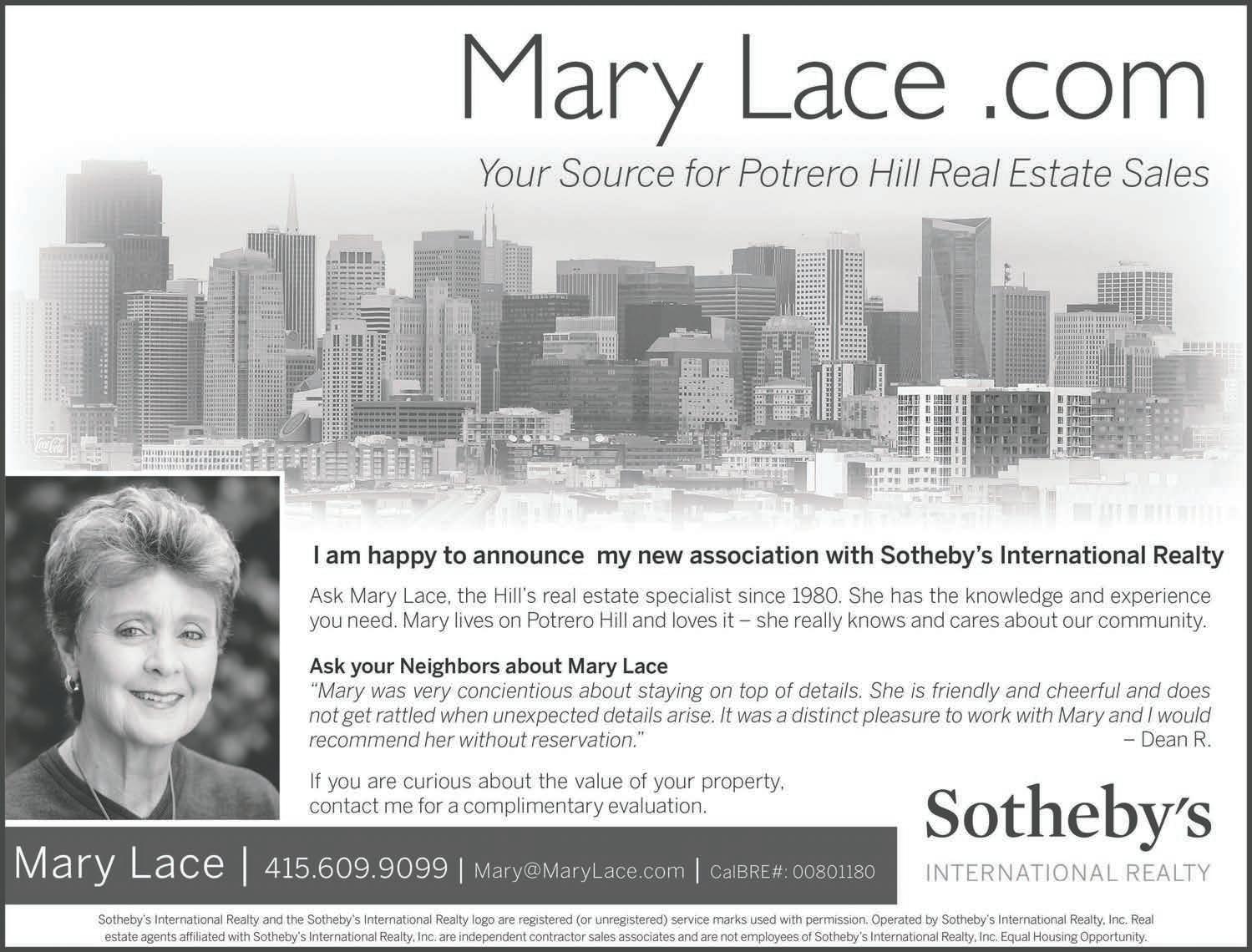
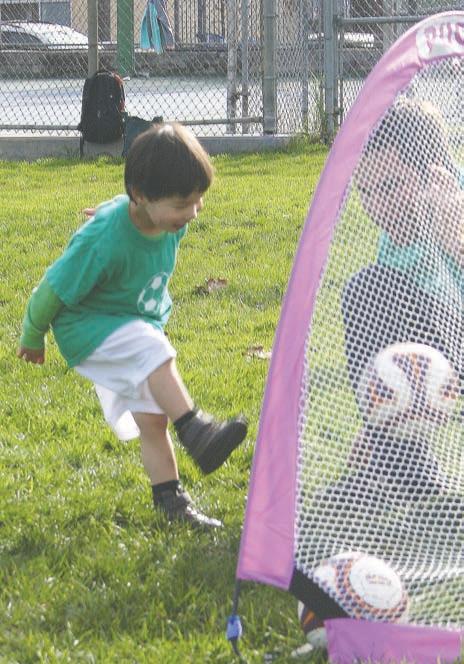 BY MICHAEL IACUESSA
BY MICHAEL IACUESSA
On Monday mornings in Jackson Park one might find a few waddling penguins dribbling eggs through a grassy version of the Arctic. That’s if you can get into the mind of a small child. The scenario is one of several that instructors create to engage SF Tots soccer program participants. SF Tots is in its 10th year offering soccer and basketball programs to kids between the ages of 18 months and six years old.
“We want them to learn sports as fun first, and we use story-based games to tap into imagination rather than just have them run around a cone fourteen times,” explained Brian Phelps, who owns and manages the company. In addition to the penguin scenario, the youngsters pretend to be monkeys chasing bananas; during running exercises they turn into cheetahs.
The 36-year old Phelps, who has a two-year old son of his own, bought the company in 2012. A former graphic designer who wanted to exit corporate life, he followed advice from his wife – now a stay-at-home mom, with a background in education – and enrolled in child development classes at Saddleback College. The Sunset District
resident believes it’s the best career move he’s ever made. The greatest benefit, he said, is “to see them develop before your eyes and to see their faces light up when they accomplish something.”
In addition to the customary dribbling around cones and kicking balls into nets, Phelps offers offbeat drills, like throwing hulahoops into the air and having the children chase them around the field. “It teaches them hand-eye coordination and to be able to follow,” he explained. “The main focus is child development that uses sports as a vehicle for that.”
It’s an inexact science though. On one Monday it was apparent that for some tots, who whiffed at the soccer ball, kicking the cones over was just as rewarding.
The company has 15 employees, four of them full-time. Some are former athletes. Others are students studying child development. While the program teaches fundamentals that’re useful for children who go on to join school teams, socialization, teamwork and motor skills are the main focus. During breaks between exercises the kids gather to sing songs, which Phelps explained aids vocalization skills.
SF Tots runs four basketball and soccer programs a year in various City locations, each lasting ten weeks. The basketball classes, which aren’t offered for those under two-and-a-half, are held at the Jackson Clubhouse on Saturdays. There’s a soccer class at Mission Bay Commons. Sessions are once a week for 40 to 50 minutes, depending on the participants’ age.
The teaching approach varies by age group. Classes for those under three-and-a-half require a parent to be present and involved. For soccer, that might mean having the toddler score a goal by kicking the ball between mom’s legs; for basketball, hitting the ball out of dad’s hands. As participants get older, exercises involve having them follow the ball closer and partnering
up. After age three-and-a-half, there’s more focus on the sports themselves, with up to two-on-two scrimmages, and skill development, like kicking the ball with the side of their foot.
According to Phelps, at $225 weekend classes fill up quickly; for $185 weekday ones are less popular. Signup has begun for the spring season, which starts in March. Phelps said 3,000 children go through the program an-
nually. SF Tots also provides programs for preschools, birthday parties – at a cost of $220 for 12 kids or less; $330 for larger groups – and private sessions. At the end of the class instructors throw all the balls out and let the kids score goals. “Most important is having fun. That’s really what we are all about,” said Phelps.
T he San Francisco Municipal Transit Agency (SFMTA) will consider expanding on-street parking for car share companies when its board of directors meets in March. San Francisco may be the only U.S. city in which public transportation, parking and taxi medallions are all governed by one agency.
As part of a pilot program, started in 2013 set to expire this year, SFMTA rents 205 curbside spaces to Zip Car, Getaround and City CarShare. At pilot launch the agency declared that car sharing met several SFMTA goals, notably a reduction in the number of vehicles in the City, which results in improved parking management and lower greenhouse gas emissions.
At the time, SFMTA compiled a list of 900 on-street spaces for possible car shares. However, Andy Thornley, who heads the program, said that he doesn’t believe the program will expand that drastically. Thornley, who indicated that his team would be recommend enlarging the initiative, stated that the exact number of additional car share space is yet to be determined, and that, even if the board approves expansion, taking additional parking spaces from general use will require public outreach.
Proposals to remove public parking spaces generally invite controversy in room-constrained San Francisco, particularly if the spots are near businesses that rely on car traffic. There
CAR SHARING continues on page 14
I believe in getting more out of life.

My time is precious. Every moment counts. That’s why I chose Kaiser Permanente. My doctor is close to home, so when I go for a checkup, I can visit the lab and pharmacy, too—all in one appointments, get health advice, and more. It’s that easy. This way, I have more time to spend on what matters most—life.
Last fall, Tom Frenkel, owner and manager of Blooms Saloon for 34 years, transitioned to the role of silent partner; 18th Street resident, Barbi Tice, became manager and two-thirds owner.
Located at 1318 18th Street, the tavern was originally called Joe’s on the Hill, founded by the late Joe Cadinale in the 1930s following Prohibition. In 1979, Cardinale sold the business to an investment group that changed the name to Klonsky’s, after Alan Klonsky, the group’s principal investor. Frenkel, who had moved to San Francisco from St. Louis in 1969, purchased both the bar and building in 1982 for $290,000, and changed the name to Blooms Saloon, inspired by the fictional character Leopold Bloom, protagonist in James Joyce’s Ulysses. According to the 76year old Frenkel, it’s Potrero Hill’s oldest bar, featuring a casual, laid back sports-oriented atmosphere.
“My vision was to get to this age without ever having a real job and I think I succeeded,” said Frenkel. “I got into the bar business in 1976. An eight year lease on a Cole Street bar ended, so I was on the lookout to buy another bar. In 1981, a friend took me over to Klonsky’s and I heard it was for sale. It was cheap and came with the option to buy the building, which made it attractive as I wouldn’t have to deal with a landlord.”
Frenkel modeled Blooms Saloon’s atmosphere after his experiences hanging out illegally at a simple, neighborhood bar as a teenager in St. Louis. Despite earning a law degree and working on a single case between 1973 and 1974, Frenkel felt he belonged more in the “t-shirt and jeans” world than the “coat and tie” one.
“I managed to waste all the money I had made in my 20s but still became a modest success and created jobs for
people; some have worked at the bar for 15 to 20 years,” he said. “Barbi was the perfect person to buy the bar because she lives two blocks away and she doesn’t want to change anything significantly. The bar was never put on the market. I made a deal with Barbi because I wanted the bar to succeed. It’s a 20-year, favorable lease deal at the low-end of the market.”
As two of the longtime bartenders — now in their 70s — have retired, Tice works shifts twice a week and has hired a new bartender alongside remaining staff. She also owns the Bell Tower restaurant at 1900 Polk Street and another bar, Ace’s, at 998 Sutter Street. New to bartending, Tice took the management reigns gradually and has been focusing on keeping existing patrons happy, as well as attracting newcomers. She views her role as maintaining Blooms Saloon as a “Cheers” style public house but with a fresh vibe that’s welcoming to everyone.
“The neighborhood bar is a little gem in Potrero Hill,” said Tice. “A lot of bars have become hipster places, which is fine, but I want the Saloon to remain the Saloon. It’s a bar not a cocktail lounge. We have decent prices and no cocktail menu. It’s a little hole in the wall with an amazing view of the City.”
Tice and Frenkel had been contemplating their partnership for the past five years, with the goal of working to increase the bar’s popularity, given population growth in the neighborhood, while retaining its familiar atmosphere. So far the most notable change under Tice’s leadership is that the Saloon now accepts major credit cards. Events like the annual Independence Day picnic and Super Bowl party are slated to continue. Two pinball machines and a pool table are available for use by patrons. Although no food is served, people freely continue to bring fare to the bar, especially at lunchtime.
Blooms Saloon features simplicity


“Claudia was accessible and diligent in her communications with us, she is tapped into and knowledgable of San Francisco’s market trends, she is a wealth of information and resources due to her time on the job here in the city and her tenacious integrity. We also simply had a great time with her. She is a great negotiator with amazing follow through. Trust us... you will be glad that you chose to work with Claudia.”-Brad H., Oct 2016
in its offerings, with no specials or signature craft drinks. According to Tice, all the basic drink recipes are covered, including a popular Manhattan and plenty of Jameson flowing on a typical night. Largely due to being in close proximity to the Anchor Brewing Company, Anchor Steam Beer is often on tap, with local brews by Harmonic Brewing coming soon.
“I don’t see how things can stay the same with the huge hotspot coming at Mission Bay and gigantic condos everywhere,” expressed Frenkel. “I see the Hill getting busier, especially when the Warriors move down there.
It’s not the quaint Potrero Hill of the past. There has been a lot of restaurant turnover and the rents are astronomical. Hopefully the bar will become a more popular neighborhood spot but won’t become an exotic bar like one of those foofoo Downtown places.”
“Everyone is welcome,” Tice said. “I love the influx of younger customers who’ve moved to the neighborhood. I want to keep it an old timers bar where everyone is welcome. People come here to celebrate the neighborhood. We want to make it a great welcoming place where people can gather.”



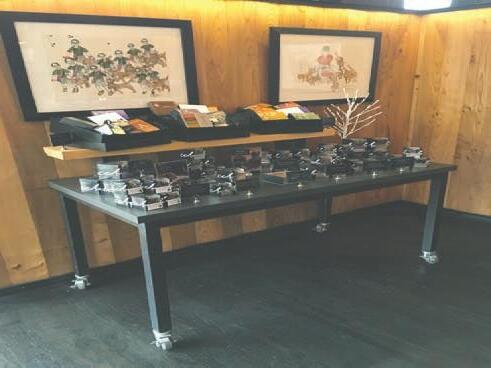 BY BRETT YATES
BY BRETT YATES
There are many perfect days to be had within the plentiful sunshine and amiable neighborhoods of Southeast San Francisco. For a lazy, or not-solazy, day off, Dogpatch, Potrero Hill, and surrounding areas offer enough activity and diversion to render unnecessary a trip elsewhere in the City. There’s a particular pleasure, beyond even the convenience of it, in staying close to home.
A good way to get the day started is, naturally, with a caffeine fix—and possibly breakfast —at Cafe Réveille, 410 Long Bridge Street, the latest expansion by the Réveille Coffee Company, which began inside a truck parked at Jackson Square before establishing brick-and-mortars in North Beach and the Castro. The Mission Bay location functions not only as the company’s most ambitious restaurant, offering full menus of breakfast – before 11:15 a.m. – lunch, and weekend brunch, but as its central roastery, with the machinery in full view of curious patrons while the fancy coffee—“Guatemala Chochajau;” “Burundi Gaharo”—is expertly produced.
An abundance of natural light floods the coffeehouse’s modern interior, nearly blinding the baristas at certain times of day while creating wonderful conditions for Instagramming lattes. At this popular communal spot, surrounded by unoccupied storefronts, it’s possible to experience the first stirrings of a new neighborhood—with luck, perhaps genuinely stylish rather than just generically sleek—in Mission Bay’s medical-biotech-condominium zone. Note: the accent mark over the e suggests that “Réveille” is pro -
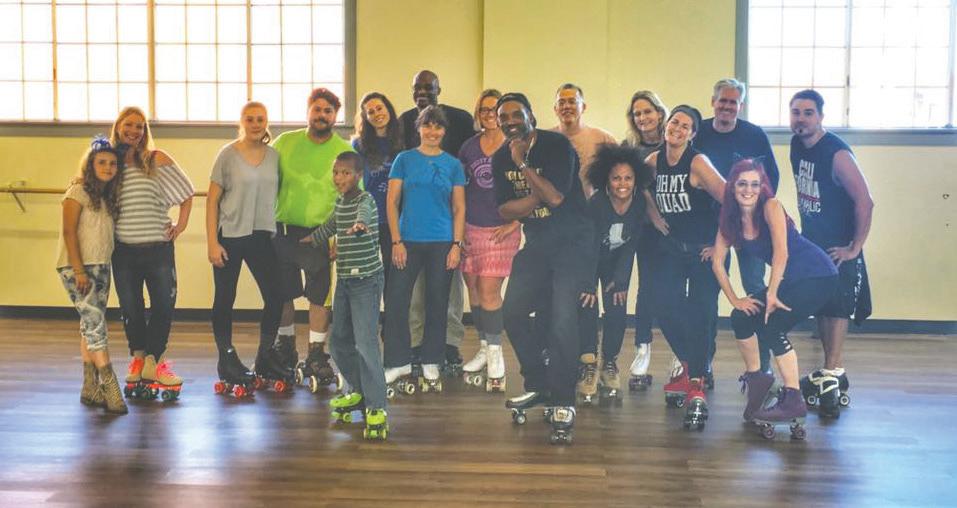
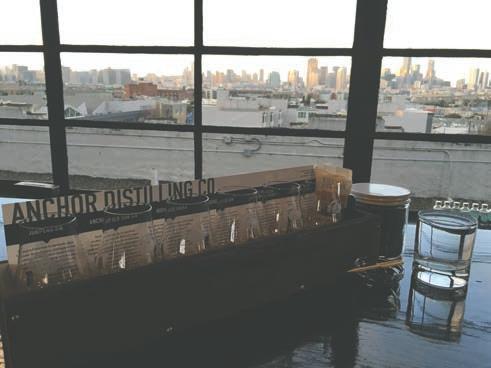
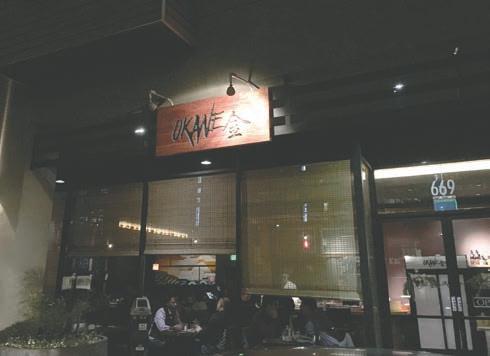
nounced like the French third-person verb for “wake up” (ray-vay), not the bugle-related military term in English (rev-uh-lee).
Next, it’s time to work on your already neglected new year’s resolution to exercise more: signup for a class at Dogpatch Dance and Yoga, 435 23rd Street, which opened in October with an uncommonly eclectic variety of instruction, with styles ranging from line dancing to K-pop to rollerdance (!). You can even learn how to twerk. As the world’s worst dancer, I chickened out on this one, but owner Kafi Payne assured me that, in fact, “almost all of our classes cater to beginners. We pride ourselves on being a welcoming and inclusive environment.”
If you haven’t noticed Kafi’s studio that’s probably because it’s invisible from the street. If you head east on 23rd you’ll see an enormous storage facility just before the road ends at the Bay, with a green-awning entrance past the gate on your right. Dogpatch Dance and Yoga uses the same entrance as the storage company, occupying much of the building’s second floor. A coupon is currently available on Groupon.
Once you’ve finished cutting a rug or two, you’ll likely feel entitled to reward yourself with a treat or three at Recchiuti at theLab, the artisanal chocolatier at 801 22nd Street. This newest incarnation of Recchiuti’s Dogpatch presence opened in November, but the owners have been creating their confections in the neighborhood for two decades; they previously operated a cafe at the same address, which closed in 2014 due to regulatory hurdles, as well as a smaller retail space called Little Nib just down the street.
Recchiuti at theLab, like the Rec-
chiuti store in the Ferry Building, sells smallish packages of unfathomably elegant and delicious special-occasion chocolates. The Dogpatch shop additionally puts forth a Friday to Sunday menu of freshly-made desserts, including whoopie pies and cookies. There are two varieties of hot chocolate available daily.
By now, the evening will be near, which means that you might be tempted to consume a pre-dinner drink. There are a number of excellent bars in Dogpatch, but for a unique imbibing experience visit Anchor Distilling Company, 1705 Mariposa Street, for an expert-led tasting, which can be booked online. Anchor Distilling shares the premises of the legendary Anchor Brewing Company, whose tours constitute Potrero Hill’s best-known tourist attraction. Unfortunately, reservations for these tours often must be made months in advance, but Anchor Distilling—which, having opened to the public for the first time in April, remains a lesser-known destination —will often have same-day availability for its tastings, which run two or three times daily from Thursday through Saturday.
At $35 per person, the liquor tastings cost more than the beer tours, and focus primarily on the beverages themselves rather than on the means of their production, which takes place in a small distillery in a basement far too cramped to accommodate tourists. The tasting is held on the facility’s uppermost floor—which offers an opportunity to look at the brewery on your way up several flights of stairs—in a newly decked-out private barroom, adjacent to a rooftop herb garden. This floor previously served as a pied-à-terre for the company’s famous, now retired
founder, Fritz Maytag; the bathroom I used remained equipped with a shower.
On my visit the guide’s unpretentious lecture started with a rundown of the intertwined histories of Anchor Brewing and Anchor Distilling before diving deep into the nuances of six small-batch spirits: three gins, two whiskies, and a vodka, of which the lowest alcohol by volume was 45 percent. The sample pours were quite adequate. I found myself admiring the complexity and integrity of Anchor’s products with an increasingly pleasant vagueness as, from my perch beside the barroom window, I watched a magnificent unobstructed sunset over the San Francisco skyline.
For dinner the options are endless. In the Design District there’s an unheralded world-class sushi joint, Okane, at 669 Townsend Stread. The casual sibling to the imposing (read: very expensive) Michelin-starred Omakase next door, Okane borrows some of its premium fish from its sister restaurant. The menu includes an impressive array of delicate yet comforting vegetables, noodles, and meat dishes. With a small, intriguing selection of rare Japanese beers on tap and an unbelievable housemade sesame ice cream, Okane is as much an izakaya – Japanese pub – as it’s a sushi bar. It’d be easy to spend the rest of the night there.
This new monthly feature provides a series of 12-hour proposals—configurations of potential perfection within the paces of daily life —for residents and visitors to the land once known as Rancho Potrero Nuevo, more or less between the waterfront and the Mission. Send your nominations for possible inclusion to editor@potreroview.net.
fall down into deep water and be broken down by bacteria. The bacteria then use up oxygen in the water, required by other organisms, during the decomposition process. It could be a good thing, as it provides food sources for fish and shellfish.”
The San Francisco Bay Area is one of the world’s fastest growing economies, attracting migrants seeking opportunity. The City, neither among the largest nor oldest of human-centric global hubs, is geographically positioned as a key point in global trade routes, creating a constant state of flux, not just for people, but other organisms.
Andrew Chang, an ecologist at the Smithsonian Environmental Research Center, Marine Invasions Research Lab in Tiburon, has spent years studying Bay waters and creatures that live near the tideline. One of the few Bay natives is the Oyster; the Atlantic Oyster Drill, an invasive species, is also found in the Bay, and preys on the Oyster.
“I try to avoid saying that native species are good and invasive species are bad,” Chang commented. “It’s just part of the character of the place. Around 90 to 95 percent of the biomass in the Bay is made up of non-native species. The Bay is one of the most invaded places in the world. Historically, commerce has been a big driver of this; species come in on the hulls of ships and ballasts. The role that it plays now is something that we’re studying.”
According to Nathanael Johnson, one needn’t travel as far as the Bay-
front to delve into urban ecology. In Unseen City: The Majesty of Pigeons, the Discreet Charms of Snails & Other Wonders of the Urban Wilderness , Johnson takes readers on a journey through the urban wild lands of San Francisco and Berkeley, exploring an ecosystem hidden behind the veil of human distraction. The main actors in this bustling world are synanthropes, animals and plants that prosper in environments dominated by humans, such as squirrels, crows and weeds. Johnson was inspired to write the book during walks with his toddler-aged daughter, whose young mind noticed what adults often regard as banal. “…I had just wanted to demonstrate to her, and to myself, that my nonhuman neighbors are important by paying attention to them,” Johnson wrote.
In his chapter on crows, Johnson shares a remarkable discovery: the birds, along with dogs, pigeons, sheep and other species, can distinguish between the faces of individual humans. Although people can usually differentiate between individual domesticated animals, like dogs, most would fail a facial recognition test of crows or bees. According to Johnson, there are other beings in the urban environment that’re keenly aware of us — as individuals — while we walk by oblivious.
“Nature never misses an opportunity to exploit a catastrophe,” Johnson wrote. He spoke with biologist Chris Thomas, who studies synanthropes, and discovered that the emergence of new plant species over the past 150 years is on par with the amount of mammals lost to extinction. Research
has found that though cities aren’t conducive to many non-human species, urban areas with large parks have a greater amount of bird biodiversity than rural woodlands.
Technology Helps Illuminate Ecosystems in Urban Areas
A citizen-science movement has been growing over the last few decades, in which amateur and professional researchers collaborate informally and mostly without pay to compile information on various scientific topics. Technologies like the Internet, smartphones, handheld GPS devices and mass-market drones have been a boon to the spread of citizen-science programs.
One global citizen-science social network, iNaturalist.org, started in the Bay Area, has compiled three million observations covering almost 97,000 species of plants and animals recorded from six continents. According to Alison Young, California Academy of Sciences citizen-science engagement coordinator, when iNaturalist co-founder Ken-ichi Ueda first moved from Connecticut to attend the University of California, Berkeley, he felt lost not knowing much about local ecology, and wanted to connect with other nature enthusiasts. With a background in biology and software development, Ueda started iNaturalist as part of a graduate project while pursuing a master’s degree at University of California Berkeley’s School of Information in 2008. In 2009, he partnered with environmental scientist Scott Loarie to
further develop the platform. In 2014, the California Academy of Sciences acquired iNaturalist and hired Ueda, Loarie and others full-time.
“The Academy has a history of aggregating people’s observations of nature,” said Young. “Professionals and amateurs alike have contributed knowledge. We provide a place and a way to share observations. iNaturalist community members make identifications; other users corroborate them. It’s a social network. Users build their reputations by helping others with their observations. It’s one of the friendliest social networks.”
Young and Rebecca Johnson, Academy citizen-science lead, use iNaturalist to foster stewardship and build community through projects and events held throughout the Bay Area. One of these is a “bioblitz,” a congregation of iNaturalist members who observe and record as many organisms as possible in a particular geographic area over a short period. According to Johnson, a bioblitz was held in Heron’s Head Park last December. At Pier 94, just north of Heron’s Head, a spring bioblitz is anticipated in collaboration with the Golden Gate Audubon Society.
For the 94107 zip code, encompassing Potrero Hill, Dogpatch and part of South-of-Market, iNaturalist has recorded 436 observations covering 193 species. The Brewer’s Blackbird topped the charts, with 11 observations made mostly in the vicinity of Yerba Buena Center for the Arts, with one in Mission Bay and another at the Potrero
WILDLIFE continues on page 9
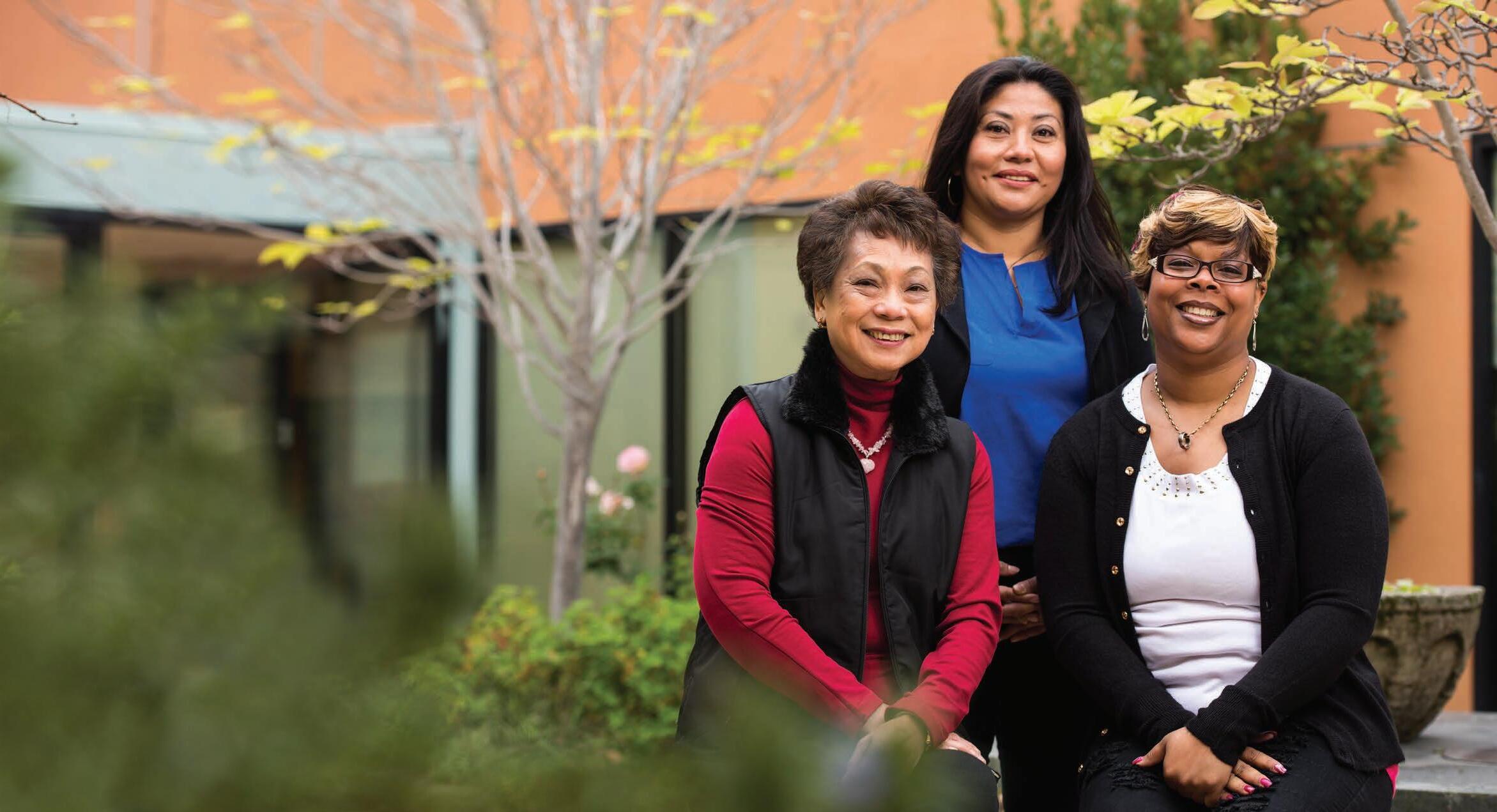

Early detection, treatment and freedom from breast cancer.
Hill Recreation Center. The species, found year-round in western states, is protected under the Migratory Bird Treaty Act of 1918. The birds prefer open areas, and can nest in a variety of places, feeding on seeds, insects and berries.
A cluster of three Coast Redwood trees was observed in northwest Potrero Hill, with another two sightings in SoMa. The Coast Live Oak is another native tree species seen Southside, with flowers appearing in spring and acorns produced about eight months after pollination. Although the diversity of observations is dazzling, birds steal the show, with a wealth of records for a wide array of avian species.
A prime wildlife viewing spot in Dogpatch is Warm Water Cove. In addition to the Northern Mockingbird, plant species like the California Sagebrush, Coyote Bush, and Mission Prickly-Pear can be found there. The Mission Prickly-Pear is a plant native to Mexico that’s become an important food source in dry regions of the world. Many parts of the plant can be eaten; the cactus fruit can be made into jams or alcoholic beverages once the spines are removed.
Mariposa Park is home to a variety of plants and insects, including the Monarch, Honey Bee, Orange Sulphur, Veldt Grass and Manzanitas. Starr King Open Space hosts Shepherd’s Purse, Green Bottle Flies and Foothill Desert-Parsley, which belongs to the carrot family, with a native habitat that spans the West Coast. Himalayan Blackberry, Blueblossom and Cotoneaster adorn Pennsylvania Garden. The Yellow-Faced Bumblebee and California Buckeye have been found near Carolina and 23rd streets.
The Potrero Hill Recreation Center contains sufficient vegetation to host a variety of bird species, such as the Eurasian Collard-Dove, California Towhee, Chestnut-Backed Chickadee, Black Phoebe, Dark-Eyed Junco, Western Scrub-Jay, Anna’s Hummingbird and Hooded Oriole. The California Towhee, native to several western coastal areas, has adapted well to urban park living.
iNaturalist data for BayviewHunters Point indicate even more biodiversity, with 2,541 observations of 517 species, mostly along the shoreline. Another hotspot is Bayview Hill, home to a variety of organisms, including the Ringneck Snake, Sea Fog Lichens, Syrphinae, and California Manroot.
Liam O’Brien, a local lepidopterist,


conducted complete surveys of butterflies in the City in 2007 and 2009, documenting 34 species. He found that more than half the species, 18, which usually only lay eggs on certain plants, have adapted and now use a variety of plants as hosts. “Some species of butterfly still need native plants, but some females are becoming generalists and are using weeds in the sidewalks,” explained O’Brien. “This is a more evolutionarily promising choice.”
According to O’Brien, the Western Tiger Swallowtail uses street trees to lay their eggs. There were five observations made of this species in SoMa and Mission Bay. The Common Checkered Skipper and Painted Lady butterflies have also converted to being generalists, and have been observed on Potrero Avenue and Third Street. Generally, butterflies that’re active and fly yearround are the species found in City streets, O’Brien said.
Other species spotted Southside include the Northern Anchovy and California Sea Lion in Mission Bay, a Seaside Daisy in Dogpatch, California Slender Salamander near Highway 280, 23 observations of Sweet Fennel — an edible plant — in Bayview-Hunters Point, and the Red-Tailed Hawk in Potrero Hill. The highest concentration of observations were made along
Mission Bay, in and around the Potrero Hill Recreation Center, Piers 94 and 96, and Candlestick Point State Recreation Area, though numerous sightings have occurred throughout Southside, from species living in parks and in pavement cracks.
“There’s a lot more going on ecologically where there are more gardens and hilltops,” said O’Brien. “Insects are opportunists, but they don’t get a lot from cement. Things can get better if redevelopment opens things up and they put plants in. I’m not against development if they add green space; it’s better than concrete.”
John Hafernik, a biology professor at San Francisco State University who specializes in the ecology and evolution of insects, cited iNaturalist as the best source for recorded wildlife observations, especially in the City’s Southeastern neighborhoods, which have been historically lacking in these types of records. He said that San Francisco has gaps in its natural history record largely due to the Great Fire of 1906, when the California Academy of Sciences, located Downtown at the time, was destroyed along with its records. Hafernik said that significant efforts are underway to create an inventory of
WILDLIFE continues on page 10


biodiversity in the City. The records are likely much higher quality than those from more than a century ago, at least in part due to modern technology.
“In general, the Southeastern end was one of the most ecologically diverse parts of the City before development, due to better weather and more soil types,” said Hafernik. “It was probably home to a more diverse set of species. This would have been in the pre-European era prior to the 1850s or so. After the Gold Rush significant development in San Francisco began.”
Hafernik views the shifts in these neighborhoods from industrial to residential mixed-uses as an opportunity to plan open space that’s recreational and can serve as habitat for plants, insects and birds. He’s concerned that as the world becomes more urbanized, children are increasingly growing up disconnected from nature, with few places to explore. He encourages urban planners to prioritize open space amenities.
“It’s about getting out and finding things that might be hiding in plain sight, such as butterflies nesting in weeds on sidewalks,” added O’Brien. “The Southeastern neighborhoods hold a lot of mystery.”
Restoration in Progress Alongside Development for Southern Bayfront and Parks
San Francisco’s Southern Bayfront, from Mission Bay south to Candlestick Point, is poised for dramatic change, as
large-scale development projects flow through the urban planning process. According to the Southern Bayfront Strategy Working Group, an initiative of the City’s Office of Economic and Workforce Development, 20,000 new housing units and 35,000 additional jobs will dot the shoreline in the coming years. Accompanying the buildings, 520 acres of existing and newly created open space will provide recreational opportunities for people, and habitats for other organisms, which already live in some of these areas.
Amber Hasselbring, executive director of Nature in the City, an organization that advocates for the protection of San Francisco’s natural areas and offers eco-literacy programs, acknowledged collective efforts to restore wetlands areas along the shoreline, but stated that they don’t adequately meet the needs of wildlife. “The more of a wetlands buffer we have, the more species we can support,” offered Hasselbring. “The Bayfront efforts need to allow for more wetlands edges, as there are issues with brick back covering the soil in the marshlands. It would be amazing if there was a more ecologically-minded design for the Bayfront development.”
Nature in the City partners with other groups to hold nature walks and sponsor habitat restoration projects. Its efforts are currently focused in the Inner Sunset and the Haight, but there may be a future watershed planning project in the Southeastern neighborhoods if the organization receives state funding this year.
A significant advocacy effort is underway to preserve the Palou Phelps
Open Space in Bayview. Zahra Kelly, Nature in the City’s director of public advocacy, is organizing residents to support preserving the neighborhood open space area from proposed development, by having the City purchase two privately-owned parcels encompassed within the grassland area. Developing the parcels would require an easement through the publicly-owned portion to connect it with streets. According to Park advocates, that would disrupt park use and have a deleterious effect on the prairie ecosystem.
Kelly collaborates with the Recreation and Parks Department’s Natural Areas Program to protect native plant species by holding a monthly volunteer clean-up and restoration community workday. Nature in the City staff conduct outreach; the Natural Areas Program funds restoration resources and equipment.
“There is pressure on these lands for development,” explained Kelly. “We have a lot of land like this in the City, so this would set a negative precedent if the parcels were developed. It’s been a hard balance, because people have to be aware of what’s going on in order to tell the City that they want the land preserved. There are some rare native grass species. The area is incredibly steep and provides a really cool view. There are a lot of mature trees. It’s a beautiful site, especially in the spring.”
Local writer and natural history educator, Joel Pomerantz, created a project, Seep City, to map San Francisco’s underground freshwater sources. He emphasized that there aren’t any flowing underground creeks apart from the artificial flows through
the City’s sewer system, but that there’s a significant amount of fresh water beneath the soil that emerges in places as springs. Prior to human alteration of the landscape, water from the higher elevation springs flowed down to the lower elevation shoreline, washing the wetlands with freshwater, contributing to habitat for many species. Today, besides providing irrigation for some plant life, the runoff’s only function is to flush sewers during the dry season.
“The marshes were very diverse in terms of bio systems,” Pomerantz said. “People are trying to recreate these wetlands by creating a larger intertidal zone in the restoration areas. Species can use these areas as habitat, but it won’t be like the original because it’s not being refreshed with fresh water in the same way.”
Two major structural barriers prohibit water flow to the restoration areas. First, when the water seeps up through the soil and attempts to run down grade it’s diverted by sewers. According to Pomerantz, the Southeast Treatment Plant lies in the midst of a significant former marshland, which effectively captures seeping freshwater. Second, even if the water isn’t diverted, the vast majority of the Bayfront from Downtown to the southern boundary is filled in with concrete, other materials or diked, which block water like a dam.
“There are only a few 100 foot long spots of original shoreline,” he claimed. “The western tips of the Islais Creek Channel and the Yosemite Marsh restoration areas touch the original shoreline. Also, the easternmost tip of
WILDLIFE continues on page 11
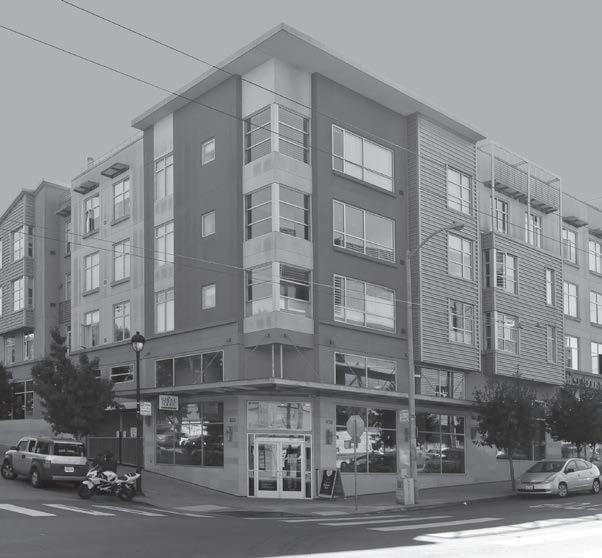



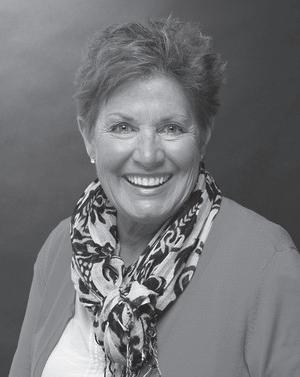
Hunters Point and right around Heron’s Head there are a couple tiny spots that were part of the cooling pond for the former power plant that’s original shoreline.”
One possible approach is to irrigate the natural shoreline areas with fresh ground water. According to Pomerantz, groundwater is being brought from Tennessee Valley Creek to Crissy Field Marsh in the Presidio. Many species are returning to the area as a result.
The Port of San Francisco is leading restoration efforts at places like Pier 94 and Heron’s Head Park, working with the Recreation and Parks Department. The Eco Center at Heron’s Head Park provides environmental education and community engagement. Efforts so far have involved improving the wetlands and adjacent grass and scrubland habitats, creating a buffer zone between restricted wildlife areas and development, and implementing public access for recreational and educational uses.
According to Noreen Weeden, Golden Gate Audubon Society conservation project manager and volunteer coordinator, GGAS advocated for the creation of Heron’s Head Park and habitat at Pier 94 subsequent to an oil spill in 1996 that impacted local bird species.
“With the 1996 oil spill many birds died,” said Weeden. “We spoke with the Port about using Pier 94, which wasn’t being used for maritime activities and had become an informal dump. We
applied for mitigation funding from the state and got funded to hire experts to design the shoreline and remove debris. Our first volunteer event was on Earth Day in 2002. It’s a five acre site that’s more for birds and wildlife than people. Heron’s Head is more for people. We have monthly restoration events at Pier 94.” GGAS, a local chapter of the National Audubon Society, will be 100 years old next year. The organization has ongoing volunteer and educational activities geared towards the public, including 160 free field trips a year.
One of the species monitored by GGAS is the Burrowing Owl, which has been declining in California. Weeden said that the bird has been seen in Southeastern neighborhoods during winter months, but that they choose other locations for breeding. Other species watched closely Southside are the Black Oystercatcher and the Osprey, a bird of prey that consumes fish which is found on six continents. Osprey in warmer states, such as Florida and California, remain year-round, while other birds migrate to South America for the winter.
“One positive sign about the health of the Bay is that we see Osprey increasing in the area,” offered Weeden. “They have been nesting out at Candlestick. We’re studying what’s contributing to their success and people are monitoring them. We’re seeing more birds around the Bay and more nesting. It’s a positive.”
After nine years of planning, design, and community engagement, Rebuild Potrero is breaking ground. The first phase of the project —72 units of affordable housing (Block “X”) — is starting construction in the month of January.
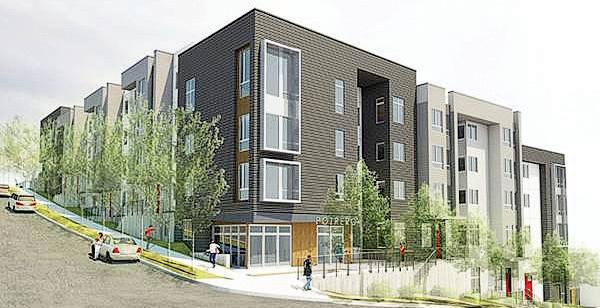
Seventy-five percent of the units will be reserved for existing Potrero public housing residents, and 25% of the units will be set aside for low-income households not currently residing at Potrero Annex/Terrace. The project is located at the corner of 25th and Connecticut, and will include infrastructure improvements on the adjacent street segments: Connecticut Street between 25th and 26th, and 25th Street between Connecticut and Texas. Street improvements include all new utilities, undergrounding of power lines, re-grading and paving, new sidewalks and street trees. A celebratory ground breaking ceremony will be scheduled for later in February or March.
Start of construction of the first phase follows on the heels of a number of recent milestones, including finalization of the Master Development Agreement between BRIDGE Housing and the San Francisco Housing Authority (SFHA), and the Department of Housing and Urban Development (HUD) approval of the SFHA’s application to demolish and rebuild the existing housing. The Development Agreement between BRIDGE Housing and the City of San Francisco is slated for approval by the Board of Supervisors on January 24, having already received the unanimous support of both the Land Use and Budget and Finance Committees. BRIDGE Housing would like to thank the residents of Potrero Annex and Terrace, and the entire Potrero Hill community for its support of the Rebuild Potrero effort.
For more information: website: rebuildpotrero.com, e-mail potrero@bridgehousing.com
of their business community. It has now created more problems for the Hill’s unregulated parking.”
SFMTA’s interactions with the Potrero Boosters on a parking management plan are still in its inception. According to Eppler, a neighborhood parking survey was conducted; the preliminary analysis indicates that people who live and work in regulated areas feel positively about existing restrictions. However, people who reside in unregulated areas are dissatisfied. He cited the northern section of the neighborhood bounded by 15th and 17th streets and Vermont and Mississippi streets as likely difficult to regulate due to diverse uses with distinct parking management needs, as opposed to the blocks just south, between Mariposa and 17th streets, that should be easier to regulate as the area is mainly residential.
“It’s a lengthy process,” Eppler added. “MTA needs to come up with a proposal for how each block will be regulated, and then we’ll go back to the community for input. We’ve been ambitious in our timeline, but there’s limited parking staff at the MTA so it will be an ongoing process throughout this calendar year.”
After numerous meetings with SFMTA and DNA regarding the parking management plan and several revisions to proposals, more meetings are anticipated early this year to reach closure on a Dogpatch parking strategy, though none are currently scheduled. Hank Willson, SFMTA parking policy manager, stressed the importance of
reaching consensus with neighborhood stakeholders before conducting outreach to the wider community about the changes ahead.
“There has definitely been progress on both sides, so we’re getting close,” said Willson. “A much more diverse group of stakeholders has been actively working on a slightly revised proposal. So far there are no revolutionary revisions. Parking meters on commercial spots will create turnover for businesses, increased RPP on the many residential streets, and time limits in Light Industrial areas. One small change is that where there were four hour time limits for visitors in RPP areas, there’ll be two hour time limits instead, which applies to most of the blocks with RPP and time limits now. It will be interesting to see what the outcome of the change will be.”
Willson spoke of unique aspects to Dogpatch’s parking challenges. The neighborhood has five Muni facilities, which employ a large workforce alongside other Light Industrial activities prevalent in the area. These jobs require workers to have a vehicle, often a truck or other large transport, and early morning work schedules. This reality creates a particular demand for parking in Dogpatch that’s not experienced in other City neighborhoods, compounded by proximity to the Caltrain Station and the associated influx of commuters seeking parking.
“We think that we will have something that the whole community can get behind,” expressed Willson. “The goal is to regulate everything. You don’t want to regulate half of it and leave the rest of the area unregulated as it pushes the problem to other blocks.”


Now through 2/14
Library: Forgiveness Program
For the first time since 2009, the San Francisco Public Library is offering their “Fine Forgiveness Program, under which SFPL will waive late fees on all returned books, compact discs, DVDs and other materials, regardless of how overdue they are. For more information: http://tiny.cc/3eatiy
Now through 2/15
Theater: Re-Opening
PlayGround, reopens under the new name “Potrero Stage: The PlayGround Center for New Plays.” To mark the occasion, PlayGround commissioned eight of its alumni to create a theatrical imagining of Potrero Hill’s past, present and future. Through The Potrero Nuevo Project audiences will journey over 250 years to experience the people, places, and times that shaped the area: the Ohlone, who first hunted and fished here; Spanish missionaries and early Californios who “settled” the region; Kit Carson, the De Haro twins, and the Mexican-American War; survivors of the 1906 earthquake; Fritz Maytag and the birth of the craft brewing movement; a Potrero Annex family on the eve Hope SF reconstruction, and beyond. The Potrero Nuevo Project, helmed by PlayGround company member Margo Hall and founding artistic director Jim Kleinmann, runs through February 19. Potrero Stage, 1695 18th Street. To purchase tickets and more information, visit http://playgroundsf.org
Now through 2/25
Art: Figure Drawings
Bay Area Figurative Drawing: 1958 to 1968, including David Park, Richard Diebenkorn, Elmer Bischoff and James Weeks. Brian Gross Fine Arts, 248 Utah Street. For more information: http://briangrossfineart. com/gallery
Now through 3/31
Art: Mystical Colors by artist Sofia Carmi
University of California, San Francisco Memory and Aging Center, 675 Nelson Rising Lane, Suite 190. Artist reception 2/23/17, 5:30 to 7:30 p.m. Plenty of parking on Third Street; close to a T line stop. For more information, contact Sofia Carmi at zc1art@gmail.com.
Lecture: Photography
Professor Alexander Nemerov, chair of Stanford University’s Art & Art History Department, lectures on Diane Arbus’s photographs taken at mental asylums between 1969 and 1971, exploring the relation of these extraordinary pictures to the poems of Arbus’s brother, the poet Howard Nemerov. Nemerov is Howard’s son,
Arbus’s nephew. This lecture is based on his recently published book, Silent Dialogues: Diane Arbus & Howard Nemerov (Fraenkel Gallery, 2015). Free with advance registration. 3 to 5 p.m. 1275 Minnesota Street Project. For more information: http:// tiny.cc/pd8siy
Art: Deborah Howard-Page and Sonja Lindstrom Featuring cupid art. 7 to 9 p.m. Farley’s, 1315 18th Street.
2/5, 2/10, 2/19
History: Dogpatch Walking Tour
The City Guides Dogpatch/Potrero Point tours are on offered on the second Friday of the month at 2 p.m., and the first and third Sundays of the month at 11 a.m. Meet in front of Dogpatch Cafe on Third and 20th streets. No steep hills; the tour last from 90 to 120 minutes. Free. For more information: http://tiny.cc/ oq8siy
Film: Bully
PREFund and University of California, San Francisco Committee on Family Services presents Bully, a documentary that offers an intimate, unflinching look at how bullying touched five kids and their families. This film captures a growing movement among parents and youths to change how bullying is handled in schools, communities, and society as a whole, and is appropriate for adults and teens supervised by a parent. Tickets: $1, purchase at http:// tiny.cc/il7siy. 6 to 8:30 p.m., Genentech Hall, UCSF, Mission Bay, 600 16th Street. Enter from Koret Quad.
Music: Daniel Berkman
Potrero Hill resident Daniel Berkman is a composer, multi-instrumentalist and innovator of the kora, a 21-stringed harp/lute from West Africa. 7:30 to 9 p.m., Farley’s, 1315 18th Street.
Community: Esprit Park
Join San Francisco Planning and Recreation and Parks departments for a public workshop focusing on Esprit Park. City staff and Fletcher Studio will present different scenarios for circulation, uses, and other aspects of the park based on previous workshops, focus groups, and surveys. Workshop participants will be asked, through a series of structured exercises, which components they prefer. Feedback will help assign City funding to Esprit Park, and form the basis for a future detailed design effort. The interagency municipal team will also be available to provide updates on the Indiana Street Bikeway and Residential Parking District. Refreshments provided. 7 to 9 p.m. Potrero Hill Recreation Center, 821 Arkansas Street. For more information: http://tiny.cc/jv9siy
Alcohol: San Francisco Beer Week
More than 125 breweries are participating in this year’s SF Beer Week, the largest, annual gathering of the Northern California craft beer community. Opening gala: Friday 2/10, 6 to 10 p.m. For the full list of breweries, and more information: https://www.sfbeerweek.org.
Parade: Chinese New Year Named one of the world’s top ten parades by the International Festivals and Events Association, San Francisco’s Chinese New Year Parade was started in the 1860’s as a means to educate the community about Chinese culture. The parade and festival have grown to be the largest celebration of Asian culture outside Asia. Parade highlights include elaborate floats, lion and folk dancers, costumed elementary school groups, marching bands, stilt walkers, Chinese acrobats, and a 268 foot long Golden Dragon. The parade will be broadcast live on KTVU Fox 2 or KTSF 26 (Chinese broadcast). 5:15 to 8 p.m. For more information: http:// www. chineseparade.com
Baseball: KNBR FanFest 2017
Includes live KNBR broadcasts from the field, player question sessions, free autographs, a kids’ zone and more. Meet players like Madison Bumgarner, Buster Posey, and others, plus a chance to take photographs with the World Series Trophies. Note that lines to meet popular players can be extremely long; come prepared to be patient. Free. 10 a.m. to 3 p.m. AT & T Park, San Francisco.
Community: Dogpatch & Northwest Potrero Hill Green Benefit District General Board Meeting. Board of Directors meeting. Free. 6:30 to 8 p.m. Tivoli Room, University of California San Francisco-Mission Bay, 654 Minnesota Street. For more information: http://www.dnwph-gbd. org
Community: Streetscape Draft Concepts
Dogpatch Neighborhood Association hosts the ‘Community Reveal’ draft concept streetscape plans for Dogpatch, developed from public meetings and feedback at DNA and Green Benefit District meetings, including proposals for new sidewalks, crosswalks, trees, sidewalk plantings, bike lanes, and more. Come review the final draft concepts and
give feedback. Municipal staff will be available to provide updates on the Indiana Street Bikeway and Residential Parking District.
Refreshments provided. 7 to 9 p.m. Harmonic Brewing, 1050 26th Street. For more information: http://tiny.cc/ jv9siy
Music: Eli and the Approach
Local acoustic music band, featuring lead singer Eli Becker, Dave Gabine on percussion, Chris Martin on guitar. The Approach performs classic songs from the 1970s and 1980s mixed with current hip hop and alternative songs. 7:30 to 9 p.m.
Art: Monet
Opening of Monet: The Early Years, the first major American exhibition devoted to the initial phase of Claude Monet’s career. Through 5/29. Legion of Honor, Lincoln Park, 100 34th Avenue. For more information: http://bit.ly/2kz4s8m
Market: Treasure Island Flea
Each month, this modern urban market houses roughly 400 curated vendors selling originally-made and designed items, art, and antiques. And there’s more than 25 food trucks, live music, workshops, kids games, and bars with seasonal cocktails, local wines and brews. $3 admission. Free parking. 10 a.m. to 4 p.m. For more information: http://www.treasureislandflea.com
Science: California Academy of Sciences Free Admission Day
The California Academy of Sciences, a world-class scientific and cultural institution located in Golden Gate Park, with a 400,000 square-foot structure that houses an aquarium, planetarium, natural history museum and four-story rainforest all under a living roof, hosts four free days a year. 11 a.m. to 5 p.m. Note that final entry to the museum is one hour before closing. Admission is on a first-come, first-served basis; early arrival is recommended due to the likelihood of high demand. Hours may change seasonally; check calacademy.org/ visit for the latest hours of operation.
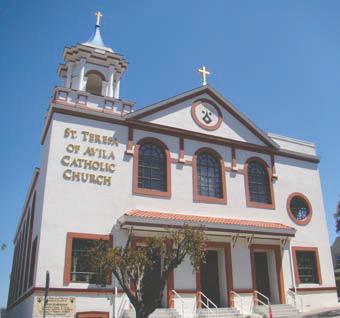

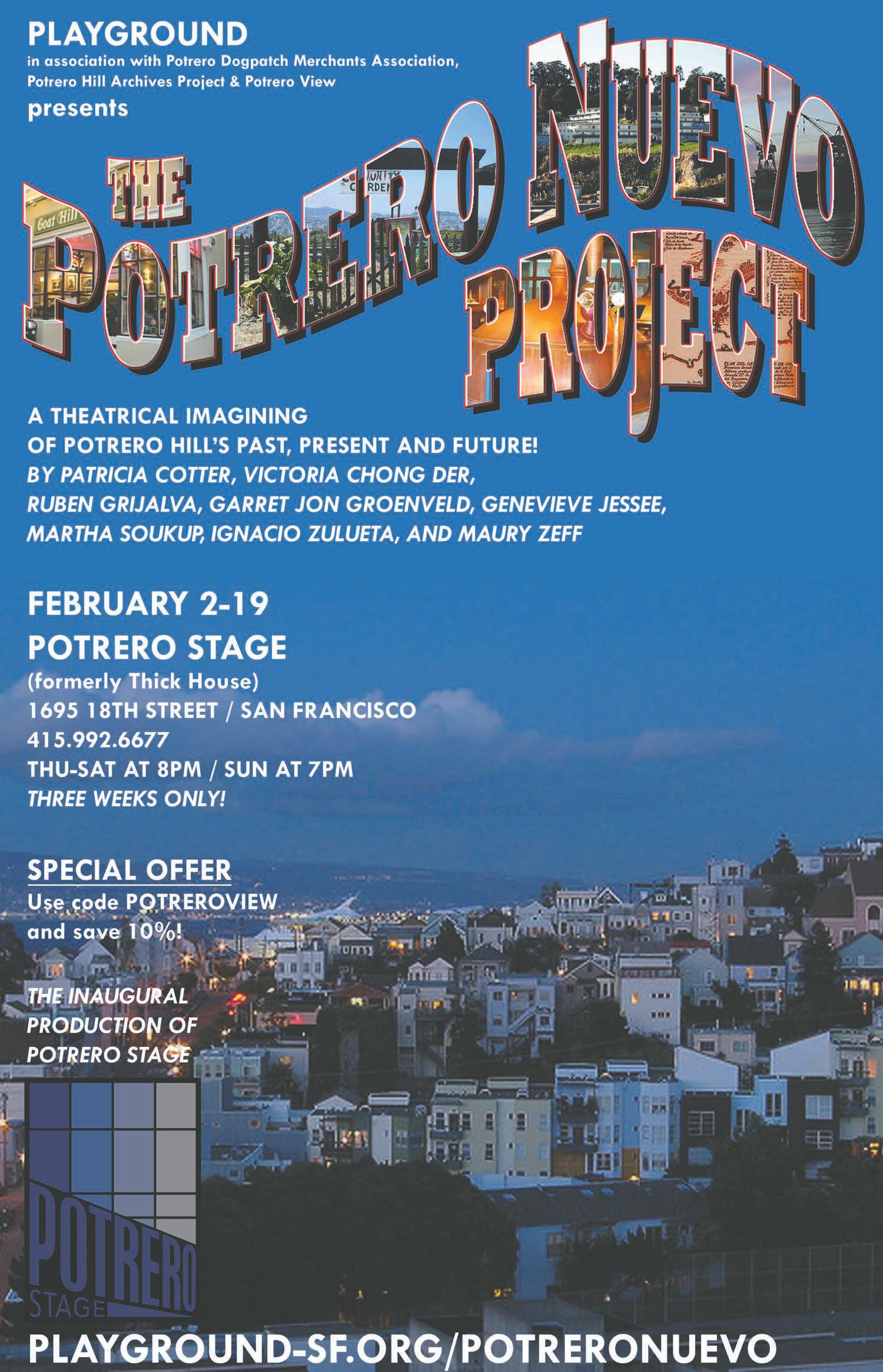
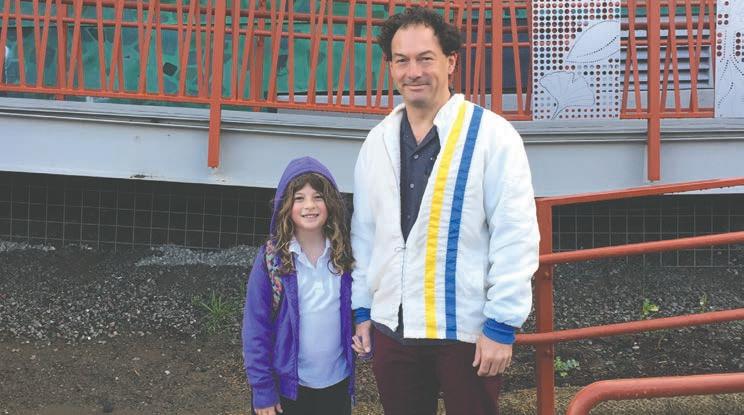 BY MAX GARRONE
BY MAX GARRONE
I moved to San Francisco after attending college at the University of California, Santa Cruz because the City was full of beloved haunts, from Aub Zam Zam to Specs. Over the years, I became more attached to all the wonderful things San Francisco offers. And it wasn’t just the bars. I started my career here, met my wife, Davina, here, and built my community here over the past 20 years.
When we had our daughter, Mila, eight years ago, we didn’t give any thought to moving out of the City, other than to confirm with each other that we both had every intention of raising her in San Francisco. Why abandon something that makes our adult lives so worthwhile? And why not give Mila a life full of the same things?
We’ve never questioned that decision, even though it’s meant sacrificing some things, like owning a house, having a dog, and a yard. On a recent rainy weekend, we dropped by the new San Francisco Museum of Modern Art for a few hours, ate great Mexican food for lunch, met friends at a local brewery, and let the kids run around. We discover new things about the City all the time, from Glen Park Canyon to a type of regional Chinese cuisine that we’d never tried before.
Becoming part of Daniel Webster
Elementary School has only strengthened our belief in the positive effects of raising a city kid; on both her and on us. Getting engaged with our school community has been personally rewarding, and helps us see outside our little family bubble. On our daily walk to school we see neighbors and friends, and pet their dogs. Our daughter knows everyone from the librarians at our local branch to chefs at local restaurants, business owners, and of course all the friends that populate our wonderful hill.
We see homeless people and trash, too. These are clear daily reminders of what we need to do better in this world. Our daughter is growing up with the awareness that not everyone shares the privileges that she enjoys. That makes her a stronger and more empathetic person, and it’s a reminder of the work we need to do to make sure everyone lives with dignity and respect.
Max Garrone, a writer and editor, lives with his family on 18th Street. “Why I Choose to Raise My Family in San Francisco” is the brainchild of the Potrero Residents Education Fund, a nonprofit committed to helping create a stronger, more vibrant San Francisco by ensuring that families from a diversity of income levels raise their children in the City. Submit your story to editor@potreroview.net.
Part-time Advertising Salesperson Wanted Modest base pay, with commission. Great position for gently persistent, organized individual who wants flexibility and to contribute to a community asset. Email an expression of interest and résumé to: editor@potreroview.net
are currently seven pairs of on-street spaces set aside for car shares in Potrero Hill and Dogpatch, but it’s the one in a commercial corridor - the two Zip Cars in front of the Potrero Branch library on 20th Street – that’ve drawn the most complaints.
“It’s the worst thing that’s happened to businesses here,” bemoaned Khaled Ghanma, who owns All States Best Foods across the street. Many of his customers come by automobile. According to Ghanma, library patrons often double park when making dropoffs, a situation he called dangerous.
Kayren Hudiburgh, who owns nearby The Good Life Grocery, shared the sentiment. “I don’t think they should be taking parking on the street,” she said. “They are taking two prime spots for customers. If customers can’t find parking, they go on by and find somewhere else to shop. It’s hurting small businesses.” She wondered why an arrangement couldn’t be made with the nearby College of Traditional Chinese Medicine, which has a parking lot.
The autos in front of the library have been popular with Zip Car patrons. A one-year evaluation by SFMTA found that one car had 89 unique users; the other 67. While there’s some overlap in the figures, a third of the time the vehicles were being used eight
hours a day. “By any measure that is very high,” said Thornley, who noted an average car share space garners 19 unique users.
Zip Cars at 20th Street, across from Esprit Park, and at 20th and Third streets, across from the start of the 22-Muni line, also have had high usage, according to Thornley. The only business near the latter is LaLanne Fitness, which has struggles finding parking for its employees. “Parking is terrible,” said owner Chris LaLanne, although he blamed much of the shortage on UCSF commuters spilling over into the neighborhood.
Other locations have been met mostly with indifference by neighbors.
City CarShare has two spaces on Third Street in front of Dopatch Wineworks. According to Joel Creager, who manages events there, the company gets special parking permits for its proceedings and is unaffected by the loss of spaces. Getaround’s pair on Minnesota Street just east of the Caltrain station is located off a commercial corridor but the spaces are next to a paid parking lot. Mark Dwight, who owns nearby Rickshaw Bagworks and recently launched the Dogpatch Business Association, said he hasn’t heard feedback about them one way or the other.
SFMTA placed the other pairs next to City-owned property. Zip Car
CARSHARE continues on page 15

Potrero Dogpatch Merchant’s Association meets the second Tuesday of each month at 10 a.m. at Goat Hill Pizza, corner of Connecticut and 18th streets. Website: www.potrerodogpatch.com . Call 415.341.8949. Next meeting: February 14th.
Starr King Open Space meets for monthly Stewardship Day the second Saturday of each month from 9:30 a.m. to 12:30 p.m. at Starr King Open Space, corner of Carolina St. and 23rd St. Come out and meet your neighbors, be a community steward, enjoy the natural grassland habitat, see spectacular views, and celebrate our beautiful neighborhood open space. Everyone is welcome. Find out more at www.starrkingopenspace.org or facebook.com/StarrKingOpenSpace
SOMA Rotary Club meets the second and fourth Thursday of the month at Mission Rock Resort, 817 Terry Francois Blvd. We meet at 6 p.m. for a mixer and 7 p.m. for a dinner meeting. We provide community service to the Mission Bay, Potrero, and Bayview communities. The focus is on providing services for the under-served of our community. The website is located at: www.meetup.com/Mission-Bay-Rotary-Club. For more information contact Nine at: n.ladow@comcast.net
Potrero Hill Garden Club usually meets the last Sunday of the month at 11 a.m. for a potluck in a local home or garden. We occasionally visit gardens such as Ruth Bancroft, Yerba Buena, Cornerstone, Filoli, and the rooftop garden at the Fairmont. We discuss gardening appropriate for Potrero Hill’s microclimates, and often have speakers on subjects such as drought, wind, shade, pests, and even flower arranging. For details, please contact us at Gardener@PotreroHillGardenClub.org
Election of new members of the Green Benefit District Board of Directors to take place in March, 2017. Candidates must register to run on the GBD website by February 17, 2017. To see if you qualify as a candidate, to sign up to run for election and to find out more about the GBD and the election process, go to our website at GreenBenefit.org/election
has two spots in front of the municipal railway office on Pennsylvania Street; City CarShare has two abutting the reservoir on 22nd Street.
G etaround, which claims to be the Bay Area’s largest car-sharing platform, with 200,000 users, differs from the other two companies in that it runs a peer-to-peer model. Instead of owning a vehicle fleet it relies on people offering their own autos for rent. As a result, it has several cars available at any given time on the Hill, the parking whereabouts left to the vehicle owners. The business also maintains two additional off-street fixed spots at 18th and Indiana streets. Last year, Getaround purchased City CarShare, which fields 200 cars in the region. Those vehicles continue to be owned by the same company, Carma, but are offered on the Getaround platform.
As part of the SFMTA pilot, the companies pay $225 a month for the Potrero and Dogpatch parking spots; there are additional zoned areas in San Francisco where the fee is less; $150 and $50. There was a $400 installation fee to cover signage and curb painting. Since it’s not practical to have the cars moved for street cleaning, the companies are responsible for space maintenance.
While SFMTA sees one of the pilot’s benefits as increased car sharing visibility, the three companies aren’t the only ones offering the service in what’s become a burgeoning field. Turo and Just Share It offer peer-topeer programs. Audi on Demand will
deliver a high-end car to your doorstep. Upshift will do the same and pickup at a designated time, although with a more modest Prius. Upshift hasn’t expanded to Potrero Hill; since its delivery drivers return on bicycle the terrain poses difficulty for that business model. Enterprise has a fleet designated for car sharing, with a pickup at 24th and Utah streets. General Motors is the newest entry to the San Francisco market, offering its vehicles under a company called Maven.
The number of competitors prompts experts to believe that car sharing continues to grow despite a dip in users nationally in 2015. At that time, Hertz, Enterprise, Zip Car – which is owned by the Avis Budget Group – and car2go made up 95 percent of the U.S. market. Hertz ceased its American car share operations, which played a part in the declining figures. The rise of Uber, Lyft and other competing services, such as scooter sharing, also have cut into the market, according to Susan Sheehan, who has been researching car sharing for 20 years and is codirector of the University of California, Berkeley’s Transportation Sustainability Research Center. Nonetheless, she believes the market is still expanding, with the 22,000 vehicles available for car sharing in the U.S. and Canada at a historic high. The trend has come a long way since City CarShare became the first San Francisco operator in 2001 with a dozen Volkswagen Beetles.
Sheehan, who first became interested in car sharing as a way to reduce carbon dioxide emissions, pointed to several studies that claimed that a
shared vehicle can replace the needs of four to 20 owned cars. In some analyses, up to 32 percent of participants have sold their vehicle after joining a car sharing program, with a greater proportion delaying purchasing one. Research indicates that car sharing vehicles get 10 miles per gallon more than the average auto on the road.
“Car sharing turns the fixed cost of ownership to a variable cost,” Sheehan explained. “When someone switches to a variable asset they are typically making more choices about how they travel and the expense.” That is, not only might people choose to drive less but by eliminating car payments, insurance, parking and maintenance costs, she estimated that people can save $200 to $300 per month.
metered. It further gauges that there are another 200,000 spaces in private or SFMTA-managed parking garages.
The municipal planning code requires new buildings with 50 to 200 units to set aside one parking spot for car shares and an addition space for each 200 units thereafter. Zip Car has three spaces at Potero 1010, its only other Hill location than the City-allotted on-street spots. However, according to Thornley the number of

Fewer cars on the road appeal to SFMTA. “A lot of folks want to own just enough car,” said Thornley. “You don’t really need a car 24 hours, seven days a week. Most cars are parked 90 percent of the time.”
SFMTA estimates that there are 275,450 on-street parking spots in San Francisco, 10 percent of which are
car share spaces isn’t keeping up with the parking lots dislocated by development, which impacts car owners and sharers. Thornley pointed out that “at a time when we are hoping to get more car sharing spaces (off-street), we are losing a lot of those.”
In determining how to proceed with the on-street parking program SFMTA will be examining whether a space is more beneficial for general use
CARSHARE continues on page 16


“So, gene-team, what’ve you all decided,” asked Justin, as he sat down at the table.
“Well, sir,” said Jordan, “We seem to be in a bit of a coo-numb-drum. Which is to say, Stephanie here is numb to the drumbeat of Operation Do-Dig.”
“More like Operation Doo-Doo,” replied Stephanie, sipping her vodka. “I’m not interested in this shit.”
“So, that’s one for,” Justin nodded towards Jordan, “and one against. Nash?”
Nash sighed. “I dunno. I’m kind of ready to depart this little adventure. Spying is one thing – that’s just a version of Wikileaks, or Alexa – but breaking and entry, not so much my thing.”
“One for, one against, and one on the fence,” said Justin. “Yet again, it’s up to me, as my alter-ego, Gasia, to determine humanity’s fate!”
“Gay-she-a? What’s that, a genetically altered edible flower?” asked Jordan.
“A groin ointment?” quipped Nash.
“A lesbian with a stutter,” said Stephanie.
Justin hairy-eyed the trio, then turned to Nash. “You know Gasia isn’t a groin ointment. Though, Gasia isn’t opposed to applying any necessary ointments or unguents to that area,” he leaned towards Jordan and fluttered his eyelashes, “Just let me know when. Anyways, Gasia’s decision is that we do it! In the name of Henrietta Lacks, and all the oppressed, ripped-off, forgotten, exploited people! Except, of course, white working class men, who

deserve it! Void where prohibited!” He gulped down the last of his beer. “To the apartment, where we shall gather the necessary costumes, uh, supplies!”
“What? No! I’m not on board with this thing,” said Stephanie.
“This train is leaving, with you or without you,” said Justin, glancing towards Pete’s back, as he exited the bar. He stood up and pumped his fist. “Choo-Choo!”
“Wait, wait, wait!” said Stephanie. “Sit down! Let’s talk this thing through.”
“Come on, Steph; I mean you, not Curry,” said Jordan. “We’ve gone over this a billion times. Which, by the way, is my intended net worth in,” he glanced at his Apple watch, “16 months and change. We break into the garden store, we dig around and find the bones, which contain the genetic material, which will save mankind from,” he looked up at Justin, “what did we decide? Premature balding? Dry skin? Loose vagina syndrome?”
“Yes!” said Justin, “Follow me!”
“There are so many reasons not to do this,” protested Stephanie. “Not least of which is randomly digging up old bones with no excavation plan or controls could contaminant the site in unforeseen and destructive ways.”
“Well, I already got a boner, and it’s big enough to dig with. Let’s go,” replied Justin, who spun around and strode towards the exit, closely followed by Jordan.
Stephanie looked at Nash, who shrugged his shoulders, sipped his beer, and nodded towards the door. She took a long draw on her vodka. Then, both
of them got up and followed Justin and Jordan out the door.
Each month the View publishes a chapter from Gold , a serialized tale of politics, capitalism, and corruption in San Francisco. Previous chapters can be found on the paper’s website, www. potreroview.net. Advertisers or supporters interested in sponsoring future installations, or publishing the final manuscript, should contact editor@ potreroview.net.
CAR SHARING from page 15
or for a car share. It also will have to deal with critics of renting public space for profit. “We wouldn’t just let a corporation rent out a space on a curb and sell ice cream on a stick or something,” Thornley said. “But the fact is we are getting more crowded, but we are not getting more curb. How can we manage the curbs so there is equitable use for it? Do households that don’t own a car get to use that curb? That’s going to make the curb go further.”
Since implementing the pilot program SFMTA has learned a few things about where spots work best. Putting them at the front or end of blocks helps people who don’t frequently drive park more easily. That those spots are often vacant helps sightlines for pedestrians, and ensures that a taller vehicle or truck doesn’t occupy the space next to a crosswalk. It surprised Thornley that usage is spread across San Francisco. Some parts of the Sunset get as much use as cars downtown.
One thing SFMTA will likely not do is provide on-street parking for companies that only offer one-way trips. In its pilot program the agency required a round-trip model; the same car that leaves the spot returns to it. There are practical reasons for this approach; SFMTA fears that cars will wind up at places like a Caltrain station while the designated parking spots remain empty. In addition, the one-way trip model competes with Muni and taxi service. The lack of on-street parking is one reason BMW’S Drive Now suspended its San Francisco operations in 2015, and why car2go doesn’t operate in the City. Oakland and Berkeley, by contrast, are in the process of launching on-street parking programs for one-way usage.
According to Thornley “there continues to be serious reservations about making a new permit for a oneway share model when we are trying to discourage driving. We might be stealing trips from Muni and might be stealing trips from taxis.”


FIVE of my most recent sales were tenant-occupied investment properties. With my guidance and experience working with rather than in spite of tenants, these properties brought Top Dollar.
The time to sell is NOW! Our “Early Bird” spring market is taking off, and demand on the Hill is HOT!

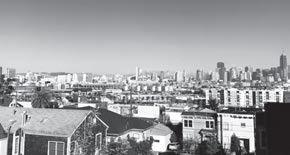



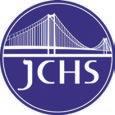
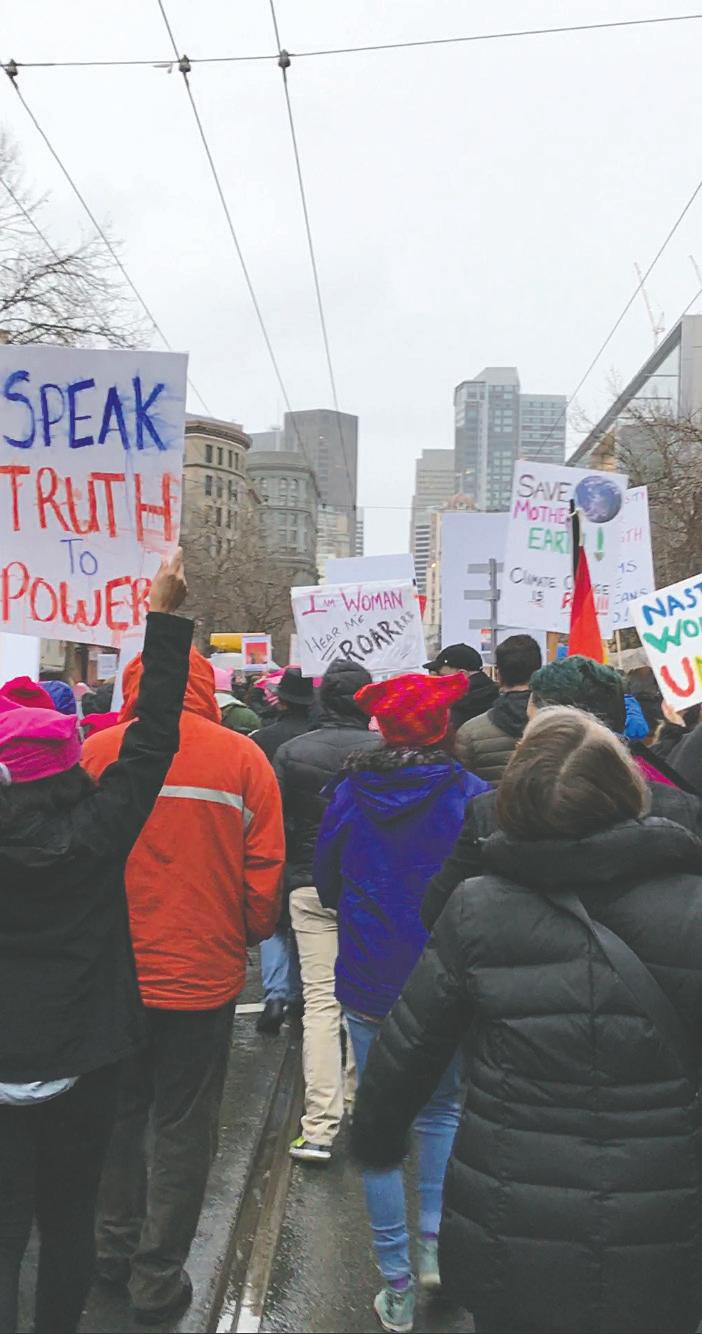




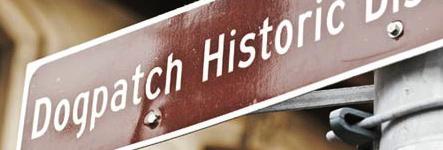






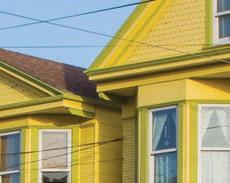

Amid the 15 galleries of edgy and eclectic contemporary art at the Minnesota Street Project, the exhibition entitled Dialogues, running through February 25 on the second floor of 1275 Minnesota Street, stands out for the sheer variety of art objects it contains: color-stained mesh tubes, fantastical ceramic sea creatures, paper weaves, embroidered watercolor cityscapes, dramatic costumes made from secondhand knitwear, newsprint mandalas.
Guest-curated by Lori Starr, the Contemporary Jewish Museum’s executive director, the exhibition traces a collaborative artistic conversation through its confluences, individuations, and mutual reinterpretations by displaying artists’ works side-by-side with those of their mentors. The artists are San Francisco Unified School District elementary- and middle-schoolers; their mentors are the professional sculptors, painters, and fashion designers who instruct them through programs provided by the San Francisco Arts Education Project, or SFArtsED.
SFArtsED’s founder Ruth Asawa started the organization at Alvarado Elementary School in 1968, when she received a $50 grant to buy clay for use in summer and afterschool classes taught voluntarily by friendly artists. Two years later, SFUSD provided an annual budget to support Asawa’s programming.
Asawa’s vision differed from conventional arts education in that her instructors were artists—not teachers— by profession. After a distinguished career in sculpture, Asawa died in 2013. SFArtsED still abides by her pedagogical mantra: “Art can only be taught by artists. If a non-artist teaches a subject called art, it is non-art.”
SFArtsED brings accomplished visual artists, musicians, dancers, actors, and poets to the City’s public schools, primarily through artist-in-residency programs. The resident artists become part-time instructors, during regular classroom hours, supplementing existing art classes with their own unique curricula. The organization serves 19 schools.
“Every residency is different, custom-made for each school,” said executive director Chad Jones. “They hire us to bring the program to them.”
The organization is a boon to schoolchildren and artists, offering employment and inspiration. Tiersa Nureyev, a costume designer who has worked with SFArtsED since 2005, observed that “having to think of new projects” for her students leads her to “think of new ways of looking at materials. It kind of forces you just to play around more. What happens is that you see the kids’ work and you’re like, ‘Oh, I should try something like that.’ There’s sort of a back-and-forth.”
In addition to its in-school instruction, SFArtsED organizes a musical theater troupe, the SFArtsED Players, whose newest production, Carnival , will run February 4 to 19 at the Eureka Theatre; and an annual summer camp, which’ll take place in June. But until recently the nonprofit struggled to produce a consistent roster of afterschool
and weekend programming.
“Space in San Francisco is at a premium,” Jones explained. “Over the years we’ve been in church basements; we’ve been in storefronts; we’ve shared spaces; we’ve been in Rec and Park spaces; we’ve been in schools; we’ve been all over the place. And it’s getting harder and harder to find the spaces for those out-of-school-time programs.”
Fortunately, at an event at the Catherine Clark Gallery Jones met the philanthropists Deborah and Andy Rappaport, who conceived of a plan to “stem the tide of galleries shutting down” in San Francisco by transforming a former Dogpatch warehouse into a collection of below-market-rate art spaces. According to Jones, the Rappaports “liked what they saw” from SFArtsED that night. “It was our visual art on the walls, and we had some of our young performers come in for some entertainment during the evening, so they got to see the performing arts side and the visual art side, and they said, ‘When we develop this thing, we want an art education nonprofit like this to be involved. We think it’s really important to diversify the audience in the art world. It’s not just a hoity-toity Union Square art scene. We want kids and families to be part of it.’ So they courted us; it’s a very rare occurrence in the nonprofit world.”
The Minnesota Street Project opened last year, providing SFArtsED with “a physical space that’s our space, where we can hang our shingle,” said board of directors chair Julie Wertz. “It’s very flexible,” Jones added. “We have movable walls so that we can adjust the size of the classroom, eliminate the walls entirely, whatever we need.”
Without the logistical challenges of “being in other people’s spaces,” SFArtsED has been able to offer fashion workshops for students between the ages of 10 and 16, as well as “Mommy & Me”-style daytime classes, “where the adult and the child, ages three to five, work side by side, and the artist teaches them projects that they can also do at home,” said Jones.
The spring catalog for afterschool courses and workshops has yet to be released, but Nureyev commented that Minnesota Street classes tend to be “pretty original. They’re not just like ‘come and make a tote bag’ or ‘come and draw a still life.’ They’re kind of more interesting and pretty specific to the artists that work there.”
SFArtsED is still in the process of determining how best to use its Minnesota Street studio-classroom to engage the surrounding communities. “We just have to figure out the best way to reach out to people to let them know that we’re here and want to collaborate,” Jones said. One success has come from promoting the Minnesota Street Project as a school field trip destination.
Jones hopes to expand the scope of SFArtsED’s Dogpatch presence. Pointing across the street to the 37 affordable studios that the Rappaports recently developed for artists at 1240 Minnesota Street he noted that “we’ve been in conversations with them about interacting with some of the kids in the program, using some of the resources over there for some of our classes.”
He imagines the block as a vast “art ecosystem” for kids and adults alike.
“It’s exciting,” he said, “to bring them into this world where they can visit galleries with artists of all different kinds, all different backgrounds, and let their families know that this is a resource they can come check out any time.”
The Minnesota Street Project is open to the public Tuesday to Saturday, 11 a.m. to 6 p.m. The SFArtsED exhibition Dialogues can be seen at 1275 Minnesota Street on Tuesdays through Thursdays from 11 a.m. to 4 p.m. and on Fridays from 11 a.m. to 1 p.m.
A block long collection of tents and rudimentary shelters made of boxes located near an Interstate 280 overpass and Caltrain tracks in Mission Bay, which served as home to upwards of 40 individuals, was dismantled by City officials last month. Staff from the San Francisco Police Department, Department of Public Works (DPW), and Homeless Outreach Team – including Jason Albertson, director of the City’s Encampment Resolution Team (ECT) – led efforts several days before camp removal to usher the occupants to available housing alternatives, such as Navigation Centers, and to store their belongings before torrential rains hit. Amy Farah-Weiss, with the St Francis Homeless Challenge, helped mediate discussions between “Box City” residents and municipal authorities.
Box City residents, along with Farah-Weiss, worked amicably with the ECT to reach an agreement to transfer
most of the homeless to the Mission Street Navigation Center, where they’d be allowed to stay in one dormitory together. At the residents’ request, use of pup tents to provide privacy would be considered by the City. More permanent box homes would be stored.
However, while the box homes were stored, there was insufficient room for residents to be placed together at the Nav Center, as initially promised. Privacy tents remain under consideration. Under recently adopted City policy, Nav Center occupants won’t generally be allowed to stay more than thirty days; most will likely leave without finding permanent housing. Data regularly published by the View indicates that the municipal shelter system is overburdened; former campers housed at a Navigation Center are competing with others who want a bed.
“We are disappointed that City government missed an opportunity to
BOX CITY continues on page 19

build on the Saint Francis Homelessness Challenge’s organizing efforts and service provision to pilot a coordinated, humane, outcomes-driven, and costeffective approach at Box City,” said Farah-Weiss. “We have been asking the Department of Homelessness and Supportive Housing for the past three months to coordinate with us on a pilot project at Box City that is aimed to support on-site sanitation, trash removal, hygiene, and mental health services through coordination with DPW and DPH, address all neighborhood complaints through the creation and enforcement of Good Neighbor agreements within the camp, support transition goals with on-site services, and create and enforce geographical boundaries to prevent an expansion of the number of residents. This is the only model that will significantly cut down on the safety and livability issues in our City’s 80 to 100 encampments, through an increase of accountability to and from encampment residents.”
The approach advocated by FarahWeiss is being piloted in Seattle, where
cessful enough for Mayor Ed Murray to proposed at least three additional sites for the coming year. “There are areas in this city where it is unacceptable to have people camp,” the mayor said last fall. “We want to find a way to get people places they can camp, but at the same time we can’t have people in our parks or on our sidewalks, or on school property or areas where they are at risk.” The Seattle pilot includes increased garbage collection around homeless encampments, rapid syringe disposal and stepped-up law enforcement related to drug dealing and sexual assault.
San Francisco’s thirty days and out Nav Center policy suggests that the City has moved from a primary emphasis on housing people through these facilities to using them as a stop gap measure, likely resulting in former campers returning to sites that were only recently vacated. One couple, former Box City residents, indicated that their child had been removed from them due to their homelessness, though they’d already been to a Navigation Center without receiving housing, ending up at Box City, only to be returning to the Center.
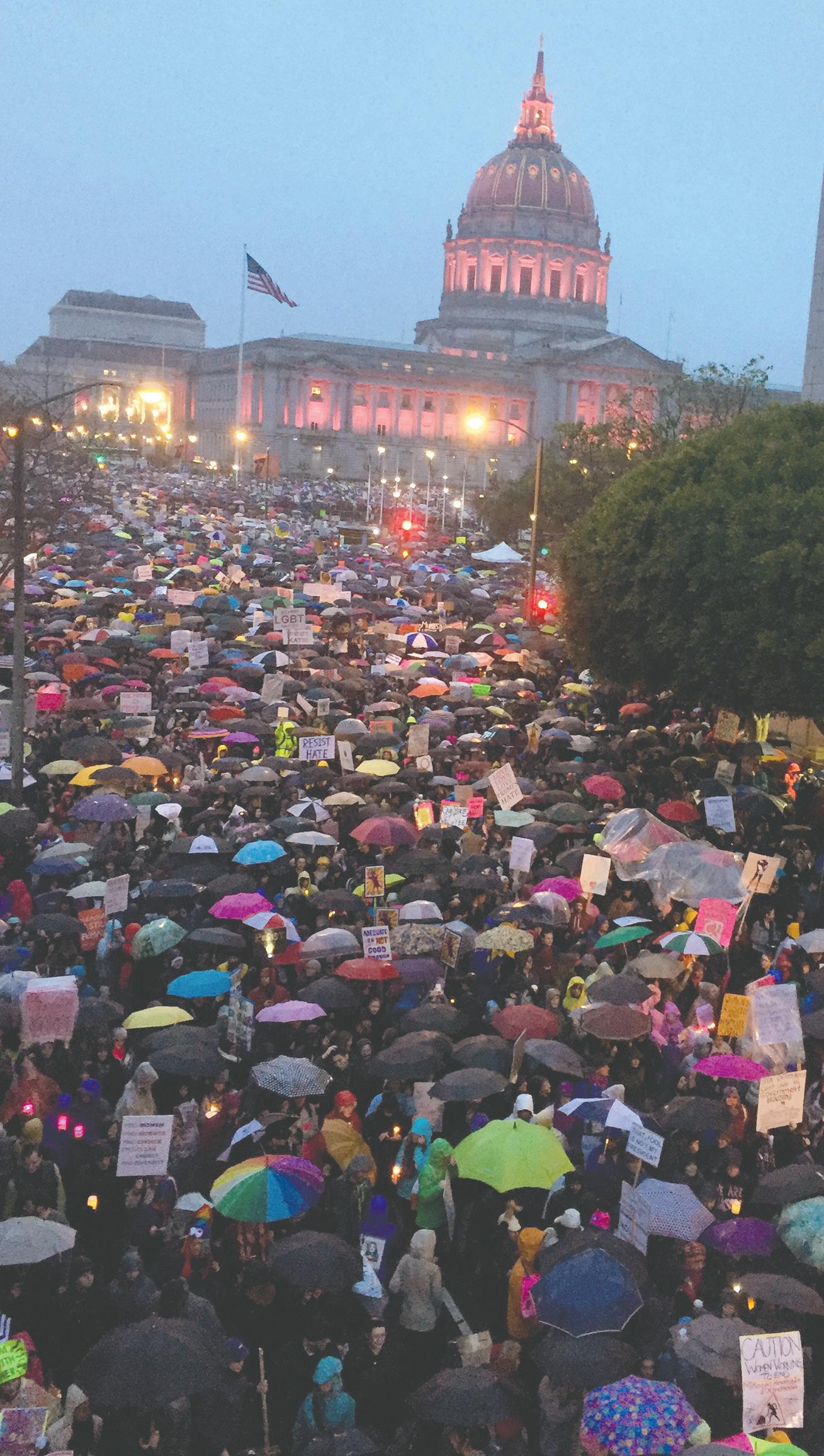

For nearly two years, some 1,500 house calls, I sold, or tried to sell, carpet and flooring in the San Francisco Bay Area. Before taking the job I’d had a successful sales career with Levi Strauss & Company, from 1986 to 2004; the “best years of my life,” ages 26 to 44. I then spent nearly six years with a Redwood City-based printing and packaging concern, a stint that ended with the 2009 recession.
After time on the couch receiving unemployment, my wife handed me a circled sales job advertisement from the Sunday Chronicle. I made a call, submitted my resume, and within seven days was enrolled in a two-week training program at a hotel 45 minutes inside Fairfield. Well into the training, my astute wife – tired of my coming home and complaining about the pace of the instruction - implored me to stay at the hotel for the final days, which I did. I ended up being one of two of 18 attendees to pass the exam, scoring 86 percent. I got the job.
I graduated with an English degree from Santa Clara University in 1983, which made me both arrogant and able to document every sales call I made.
My previous sales career was sheltered by the cushy corporate world of base pay, retirement contributions, bonuses and extravagant “off-site” seminars, complete with swag, awards, free food, hosted cocktail bars and lazy Luau bands. This flooring gig was the

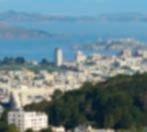

opposite: one on one sales, two if the spouse showed up; 100 percent commission; little administrative support; and constant pressure to “make the sale” within two hours of contact.
Naive and driven, I became the top salesperson in the Bay Area by month three. The call schedule was hectic and exhausting. I’d receive a text around 8 a.m. identifying the morning requests; at 1 p.m. I’d get another text with the addresses of my afternoon/evening presentations. The appointments were scheduled every two hours starting at 9 a.m., ending at 9 p.m., six days a week, with Saturdays finishing at 3 p.m.. A typical day might include two morning and three afternoon/evening visits, as the dispatch manager had to accommodate travel times and each “lead” – generated by prolific daytime television ads - was scheduled to make it manageable to drive from home to home, city to city.
I’d be in the shower, hear my phone ping and my heart would take a brief drop, as I never knew where I’d be headed. I drove to Windsor, twice to Guerneville, Morgan Hill and Suisan City. A more than 100 mile day was common; my longest was 236 miles, when I had a call at a trailer park north of Napa. For most of my stint I drove a 1994 Lexus GS 300 that my brother had gifted me with about 140,000 miles on it. At 345,000 miles I turned it into a local dealership to upgrade to a newer model after the transmission began to fail, receiving $500 toward a new
vehicle for my troubles.
The company held weekly sales meetings that exposed how cutthroat they were with regard to closing deals. At one meeting, roughly twenty chairs were arrayed in a circle, with names placed in each seat, ranging from cushy high back office furniture to folding chairs to a bench, intended to demean those who weren’t top producers. The company designed its sales training to identify representatives who could maximize profits, seeking out the few who could succeed through the rigor of their drills and provide higher than reasonable margins by exploiting company pricing guidelines.
After a two month “trial period”, salespeople were required to become independent contractors, which meant they had to create their own Limited Liability companies, responsible for their our own vehicles, gasoline, insurance, and earnings. I asked the consistently number one sales guy – a quirky Indian man - what I was lacking with regard to staying atop the sales ladder. He told me that I needed to have “blood on my fangs”.
Though I degraded from being an “A” representative to a “C” I stuck it out because of my fascination with people and properties, and the insights I garnered from entering and measuring a wide variety of living quarters, invading personal spaces, like bedrooms and closets. I always took the customer’s side; sold deals at the lowest spectrum of the pricing guidelines. I did have a
couple big contracts: one for carpet at a 6,000 square foot gated home in the Santa Rosa hills, for $11,500; another for $17,000 for hardwood for an entire home in San Francisco’s Excelsior District. I made about $600 on the first one; more than $1,000 on the second. But those were exceptions. I went from being a rookie star to solid regular, ended up a shaky veteran.
The turnover for salespeople was constant, with an average rep staying six months at most. Despite trainings at weekly sales meetings that emphasized a strict 10 step sales process, I’d just do my best to engage with the customer in an honest way to determine if the opportunity was real or not. According to the company, 20 percent of calls were “lay downs” - easy deals by customers ready to buy – 20 percent “no deals” by folks “kicking tires” – people who were just shopping or renters with no authority to make a decision – with 60 percent who needed to be convinced/ sold on the product in just two hours.
The majority of customers were middle- and low income, with an occasional wealthy person thrown in. I thrived on getting to know people from a myriad of different backgrounds, and was fascinated by the wide range of living conditions. One day I went from a call at a seedy housing project near Candlestick Park for a 400 pound Samoan man with curly toenails on crutches – nice guy – to a $9 million
CARPET CHRONICLES continues on page 23





























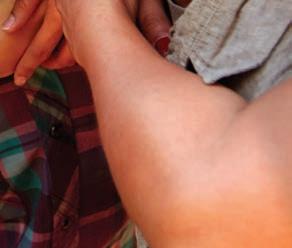

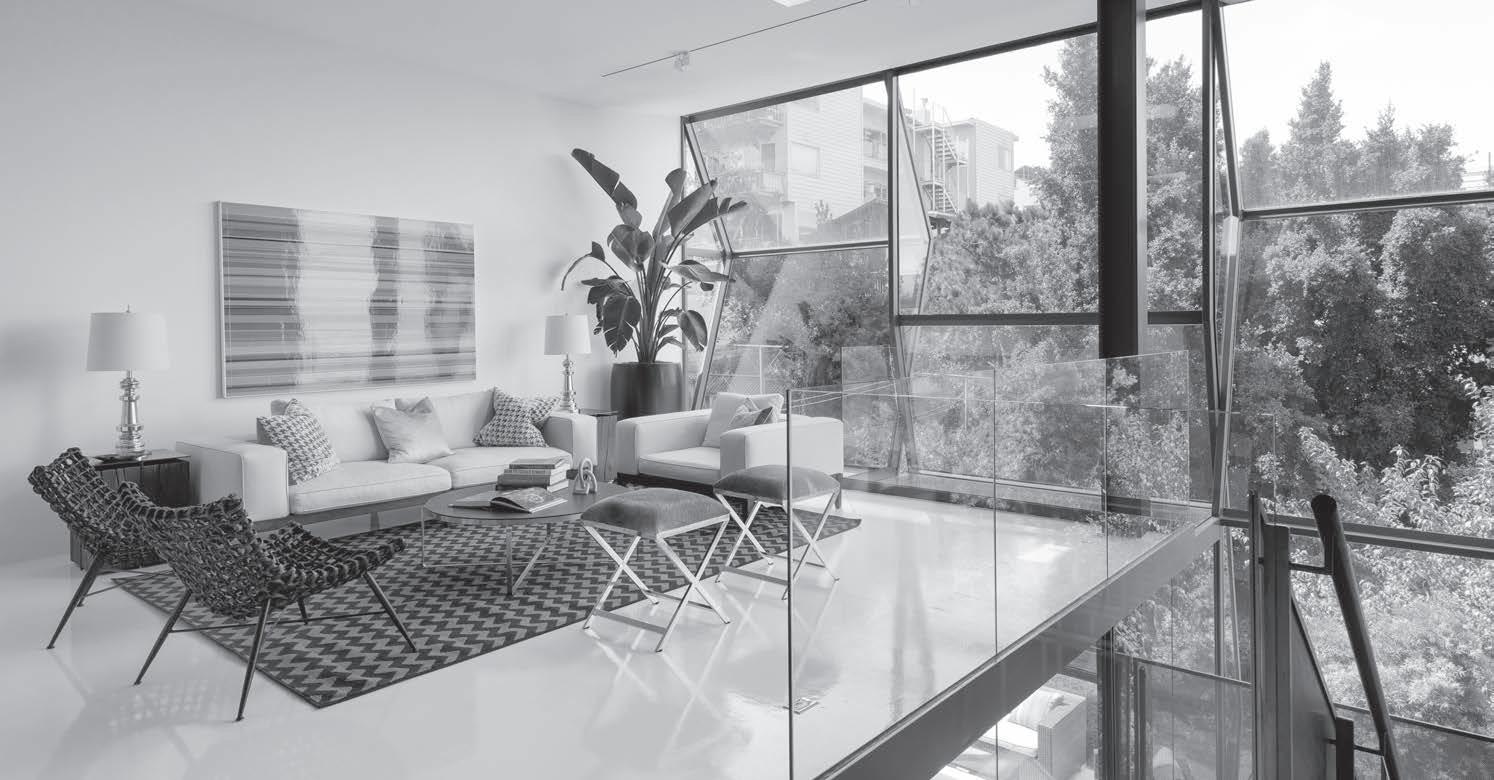
Low interest rates and powerful demand have continued to keep the Potrero Hill market strong. Many homes last year attracted multiple offers after short periods on the market.
If you have been thinking of selling your home, 2017 may be an excellent time to take advantage of strong demand from buyers.
630

Housekeeping
CLEANING PROFESSIONAL 28 years experience. Apartments, homes or offices and apartment buildings. Roger Miller 415-794-4411 References upon request.
For Rent
ONE-PLUS BEDROOM HOME FOR RENT on Wisconsin and 20th streets. Features two-car garage, loft, office space with bathroom, backyard access, washer/ dryer. Available April 1; $3,750. editor@ potreroview.net; 415.643.9578.
Experienced photo technician, specializing in in-home/studio archiving and file management. Call 826.266.7587, for Sam.
PART-TIME ADVERTISING SALESPERSON WANTED. Modest base pay, with commission. Great position for gently persistent, organized individual who wants flexibility and to contribute to a community asset. Email an expression of interest and résumé to: editor@potreroview.net
CELEBRATE YOUR CHILD’S MILESTONES: The View is pleased to publish photographs and captions feting birthdays, graduations, sports achievements and the like. Send yours to editor@potreroview.net
FREELANCE WRITERS: The View is looking for writers, with fee-based compensation provided. Contact: editor@potreroview.net
YOUR CONTRIBUTIONS WELCOME: Donations of any size are appreciated to support your neighborhood newspaper. Send checks to:
View, 2325 Third Street, Suite 344 San Francisco, California 94106
Subscribe to the View! Annual Subscription: $48.
Contact us at: 415.643.9578 editor @ potreroview.net • advertising @ potreroview.net

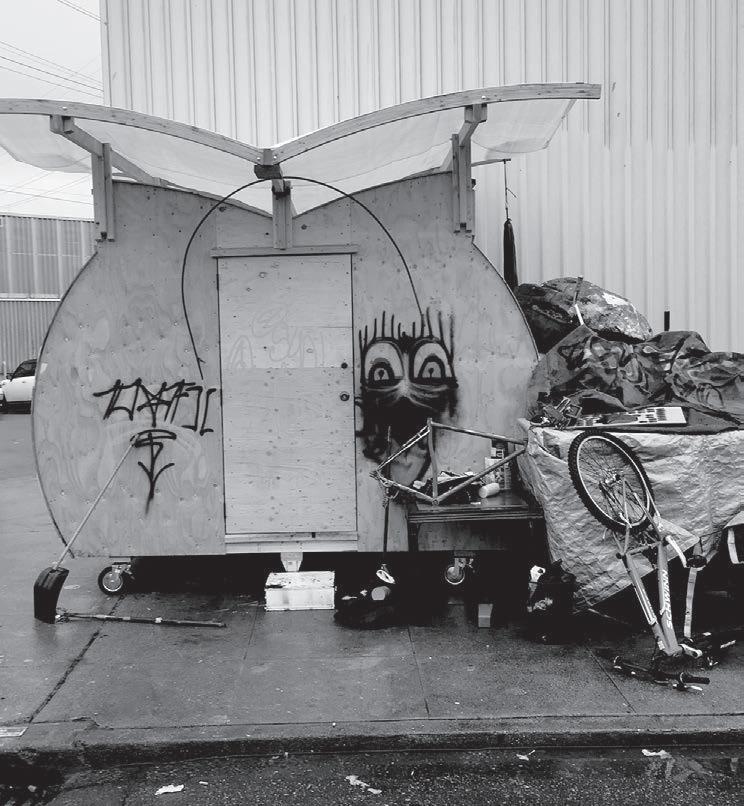
City and County of San Francisco Outreach Advertising
February 2017
Stay Connected To the City through SF311
The SF311 Customer Service Center is the single stop for residents to get information on government services and report problems to the City and County of San Francisco. And now, we have even more ways for you to stay connected to the City with our SF311 App and SF311 Explorer website.
The SF311 App lets you get information on City services and submit service requests on-the-go right from your smartphone. You can track your service requests through the app or through our new website, SF311 Explorer.
Download the SF311 App from your smartphone’s app store and visit the SF311 Explorer at explore311.sfgov.org today!
The annual citywide Summer Resource Fair is coming up on Saturday, March 11 from 10am to 2pm at the County Fair Building in Golden Gate Park. The Summer Resource Fair is a free, family-oriented event that showcases the multitude of summer programs and other opportunities for young people in and around San Francisco. This year the Department of Children, Youth, and Their Families will bring in 200 exhibitors from summer programs, camps, and classes for every age group, from toddlers to tweens to teenagers. The Recreation and Park Department will host their rock climbing wall, sports stations, and arts & crafts activities, the San Francisco Public Library will give away books, and there will be food trucks, entertainment, and more! Please visit www.dcyf.org for more information about the Summer Resource Fair, or call Emily Davis at 415-554-8991.
Assessment Appeals Board (AAB)
Notice is hereby given of 5 vacancies on the AAB. Applicants must have at least 5 years of experience as one of the following: Certified Public Accountant or Public Accountant; licensed Real Estate Broker; Property Appraiser accredited by a nationally recognized organization, or Property Appraiser certified by the California Office of Real Estate Appraisers. For additional information or to obtain an application, please call (415) 554-6778.
There will be no scheduled meetings on
LANGUAGE
Requests must be received 48 hours in advance required for interpretation. For more information see the Board of Supervisor’s website www.sfbos.org, or call 415-554-5184.
The City and County of San Francisco encourage public outreach. Articles are translated into several languages to provide better public access. The newspaper makes every effort to translate the articles of general interest correctly. No liability is assumed by the City and County of San Francisco or the newspapers for errors and omissions.
home in Sea Cliff for a mean lady who demanded I enter the property through the service entrance. I replaced carpet for an aging, chain smoking, frail cat woman in San Mateo whose habit had caused a fire in her bedroom; a couple at a Daly City condominium who smoked so much I had to keep going outside to breath, opened the window near me to do the paperwork.
I did my best to just be myself and defuse anxious situations from untrusting people whose homes I was entering. A woman at a cramped subsidized housing complex in the Fillmore District greeted me cheerily, then flew off the handle, yelling and cursing when I told her we had a $500 minimum; she only needed four 18 by 18 inch tiles for her tiny bathroom. I experienced uncomfortable calls, where one spouse desired the product while the other was dead set against it, resulting in unpleasant arguments. A young husband in Alameda wanted to surprise his wife with a room installed with hardwood. He asked me to come back after the installation, where I found a woman in tears screaming at him for what he’d done.
My involvement with the company ended with a job offer from a sole proprietor flooring enterprise based in Palo Alto. I took that position, filled with a gleeful sense of freedom when I returned my burdensome samples of carpet, tile, hardwood and vinyl to the company’s warehouse.
This is the final installment of
this year, with completion estimated for 2019. The unit oversees development projects in compliance with the California Environmental Quality Act and UCSF’s Long Range Development Plan, which covers land use activities from 2014 until 2035.
The Child, Teen and Family Center, at 2130 Third Street, is to serve as a UCSF Department of Psychiatry outpatient clinic and research and training facility, and provide space for Department of Pediatrics patient care and research programs. The property is owned by the John and Lisa Pritzker Fund, with SKS Partners, LLC and Prado Group Inc. the project’s development team. A public comment period for the proposed 150,000 square foot structure ends on February 6.
Late last year John Loomis, Dogpatch resident and professor of architecture and design at San Jose State University, attended a presentation by UCSF, SKS Partners, and the Prado Group on the project’s design. According to Loomis, community members’ concerns about the Center not blending into the neighborhood’s characteristics haven’t been addressed. “It was a very lackluster presentation that the Dogpatch Neighborhood Association
design committee and other community members heard,” offered Loomis. “The one thing that the community had expected, and that UCSF and the architects had promised, was something that fit into the neighborhood and did not look like a UCSF campus facility. However, that is just what it did look like. The proposed design was an unintentional demonstration as to why the UCSF Pritzker Psychiatry Center belongs on campus.”
Additionally, UCSF acquired a building at 777 Mariposa Street, and may seek to develop it after 2018, when the current tenant lease with Cal-Steam expires.
In adherence to the Community Planning Principles within UCSF’s 2014 Long Range Development Plan, which guides how the University communicates with its neighbors about development projects, UCSF formed the Dogpatch Community Task Force to provide San Franciscans with opportunities to weigh-in on potential impacts from the Minnesota and Third Street projects. The Task Force has 27 members, including Dogpatch and Potrero Hill residents, local business owners, UCSF staff and representatives from City agencies, such as the Planning Department. DNA, Dogpatch Business Association, Potrero Boosters, Potrero Dogpatch Merchants Association and Dogpatch Northwest Potrero Green Benefit District are also represented on the Task Force.
Since last fall, monthly Task Force meetings have been held. Members have expressed the need for development to “bring needed community services, provide architectural appeal, preserve [the] community’s unique character and enhance the quality of life.” On January 19, community members on the Task Force presented their vision for neighborhood improvements, and Robin Abad Ocubillo, Planning Department urban designer, offered the City’s Central Waterfront/Dogpatch Public Realm Plan. UCSF representatives also spoke about a framework for cushioning potential development impacts.
“UCSF is committed to being a good and productive neighbor,” stated Christine Gasparac, director of community relations, UCSF. “We understand that development projects generate community impacts, and we are working hard with the community to identify and cushion those impacts. We’ve listened to the issues raised by community Task Force members and are responding in various ways. UCSF expects to present its vision for neighborhood improvements — also called “cushioning actions” – at the February task force meeting, which will incorporate the ideas and priorities expressed by neighbors for improvements to Dogpatch — recommendations that City Planning has developed with neighbor input and UCSF’s proposals for neighborhood improvements.”
According to Gasparac, any cushioning actions implemented would have to be responsive to both the needs of the neighborhood and the UCSF community. As Task Force members’ concerns have focused on building design, UCSF has woven the design and environmental review process for its projects into Task Force meetings. Other topics covered are related to public transportation, bike routes and traffic congestion.
UCSF’s Mission Bay campus is one of the Bay Area’s biggest biotech hubs, along with South San Francisco, Menlo Park and parts of Oakland, and is popular with recent University graduates seeking affordable incubator space for start-up companies. The Life Sciences and Medical Special Use District serves as a southern outpost of a growing sector with high demand for specialized lab and research spaces.
The next Dogpatch Community Task Force meeting will be held on February 22, 6:30 to 9 p.m., at the UCSF Mission Bay campus Genentech Hall, room number 114.











